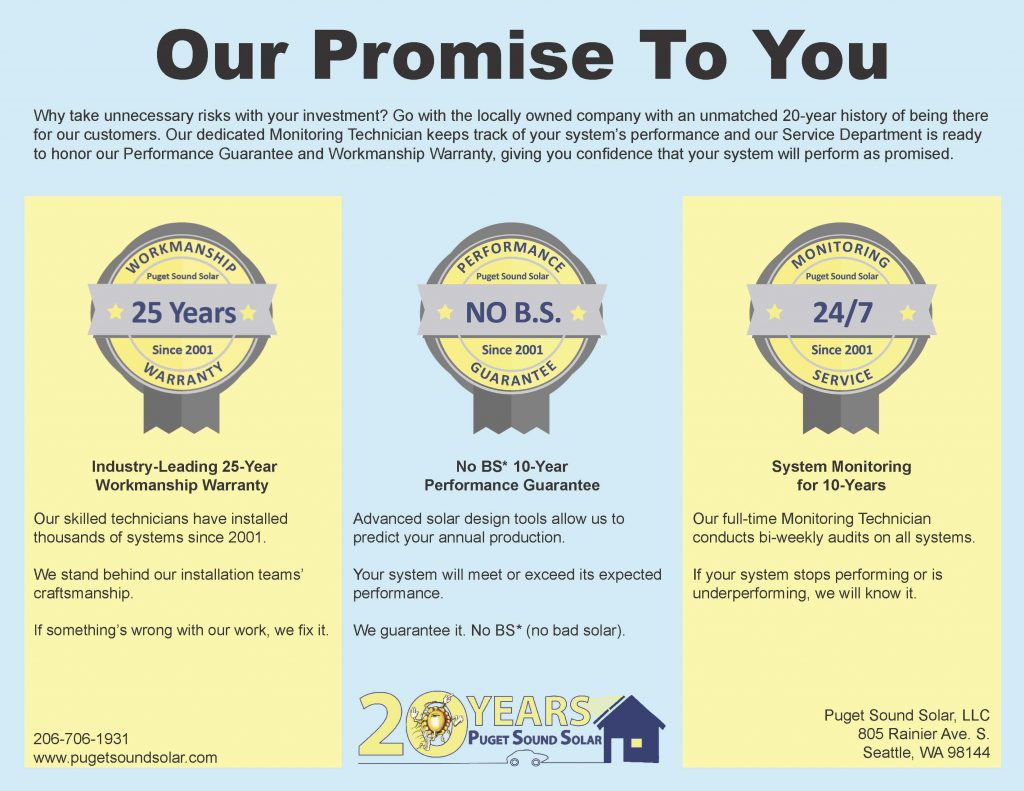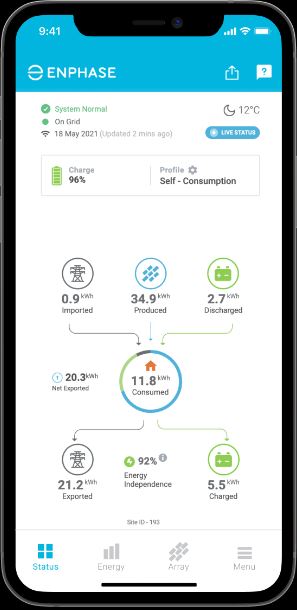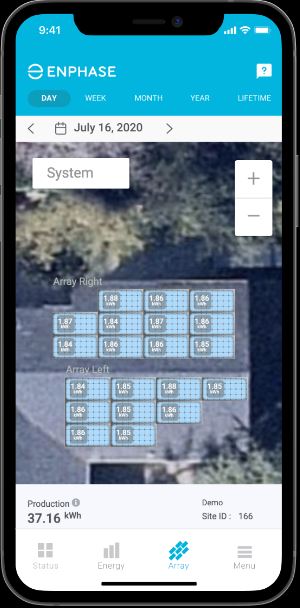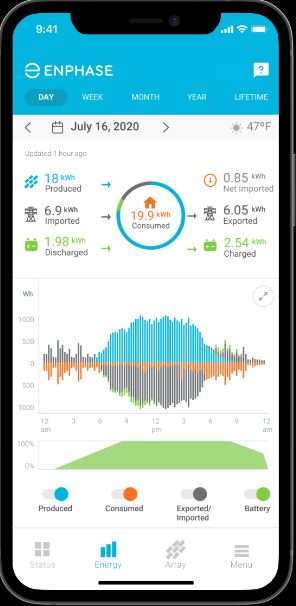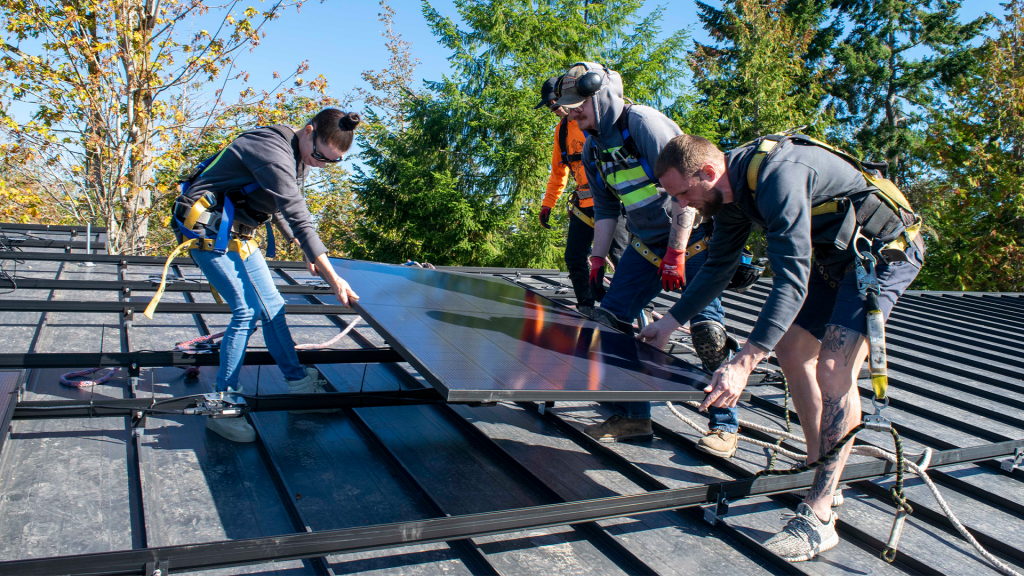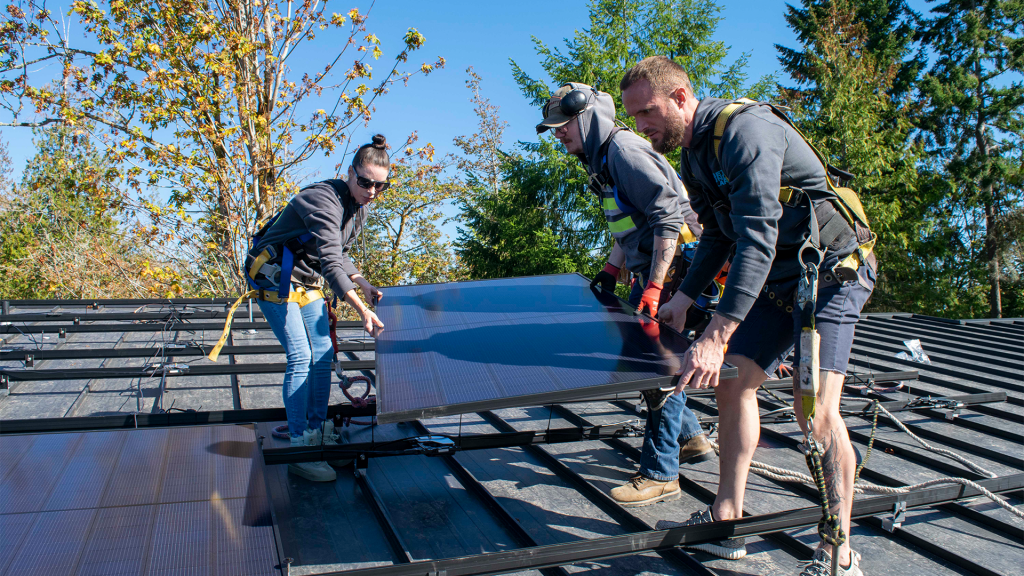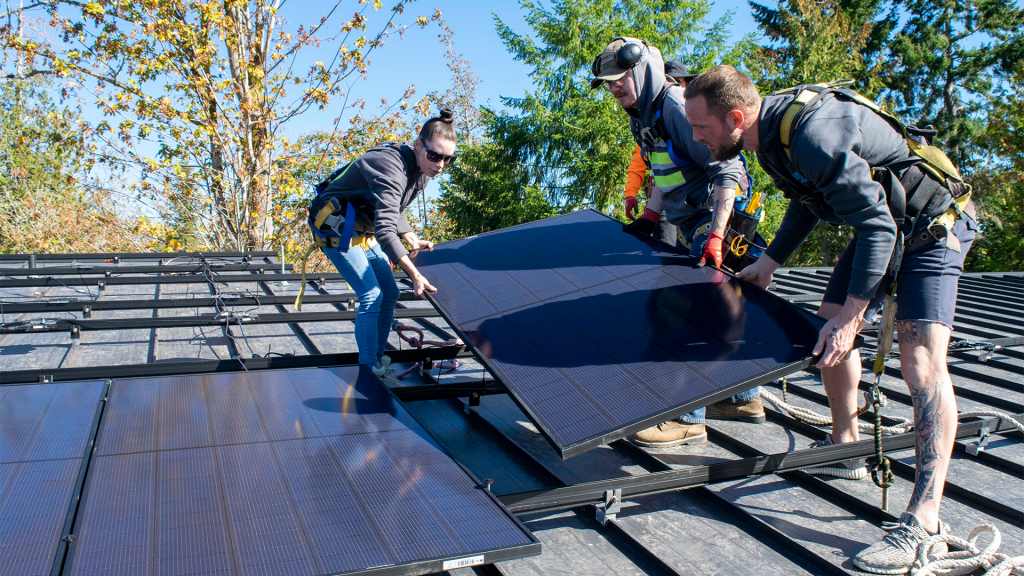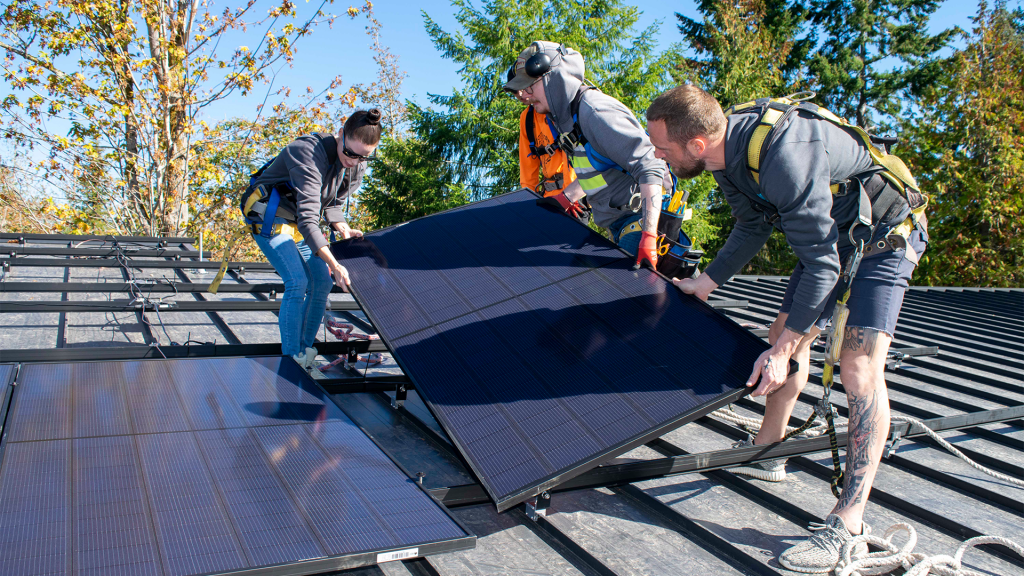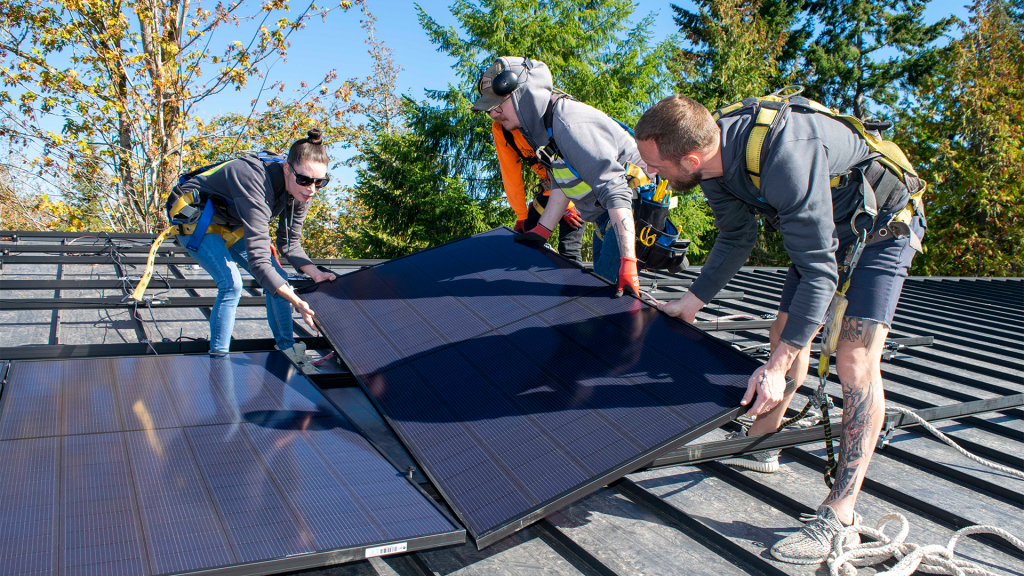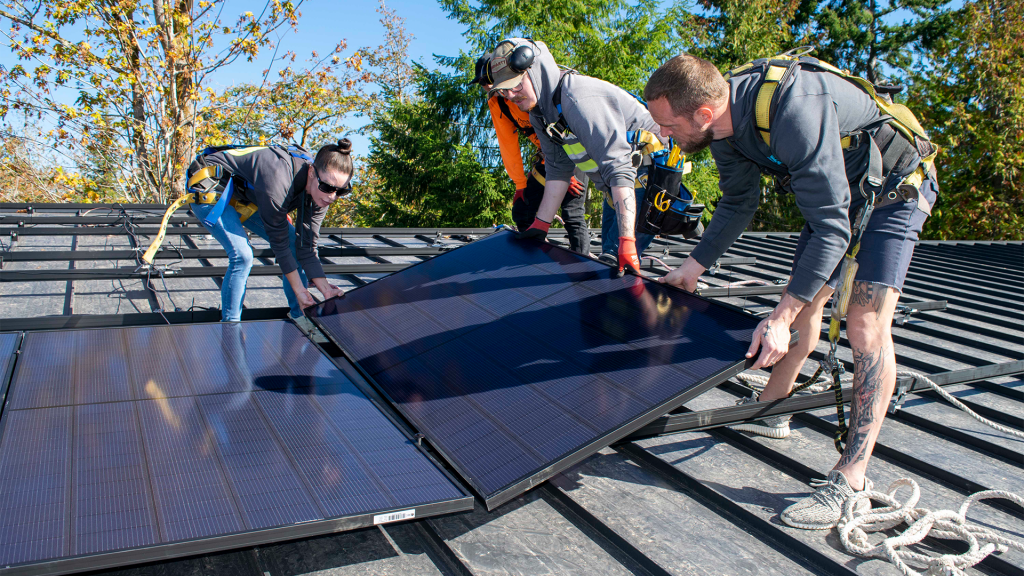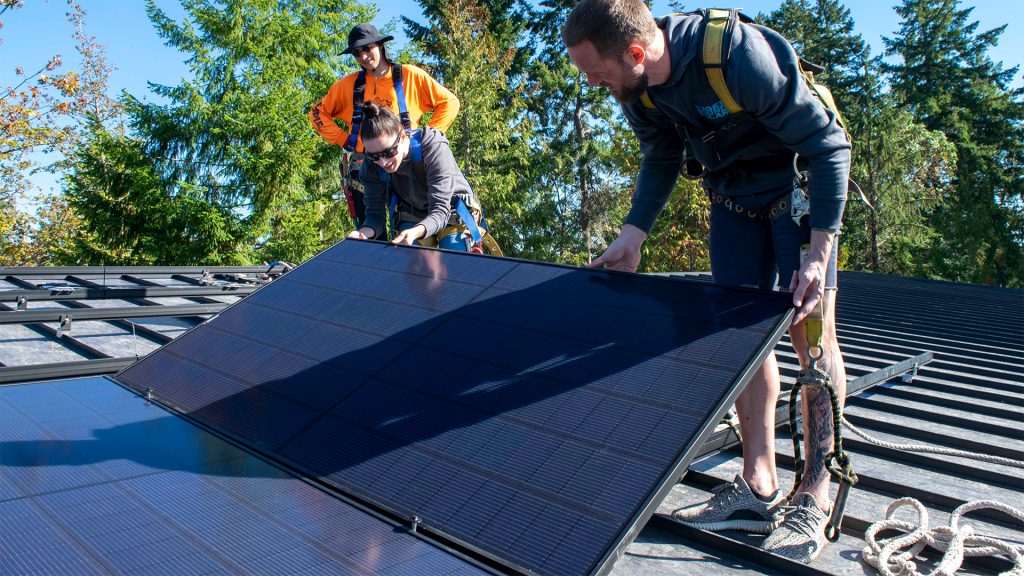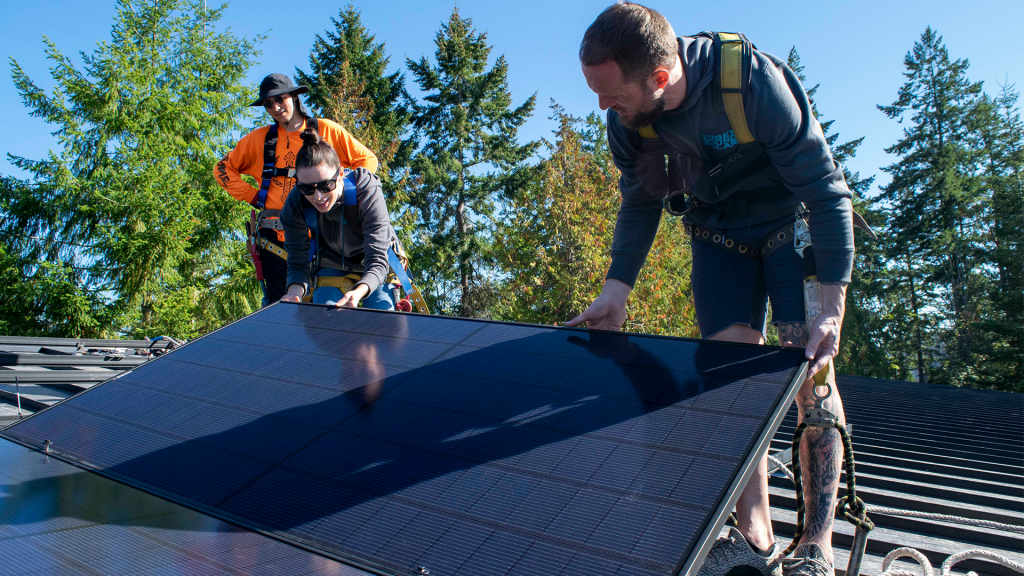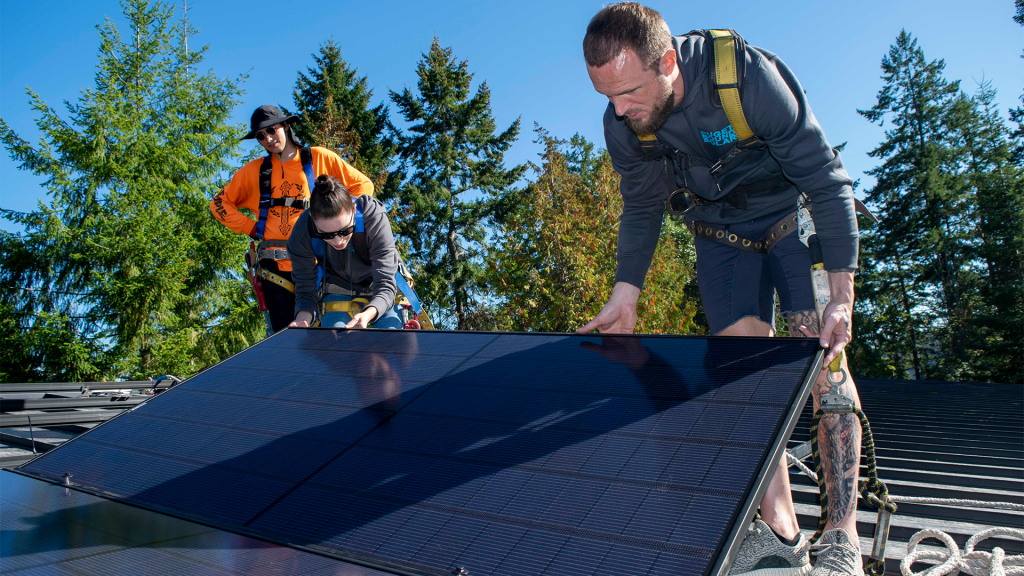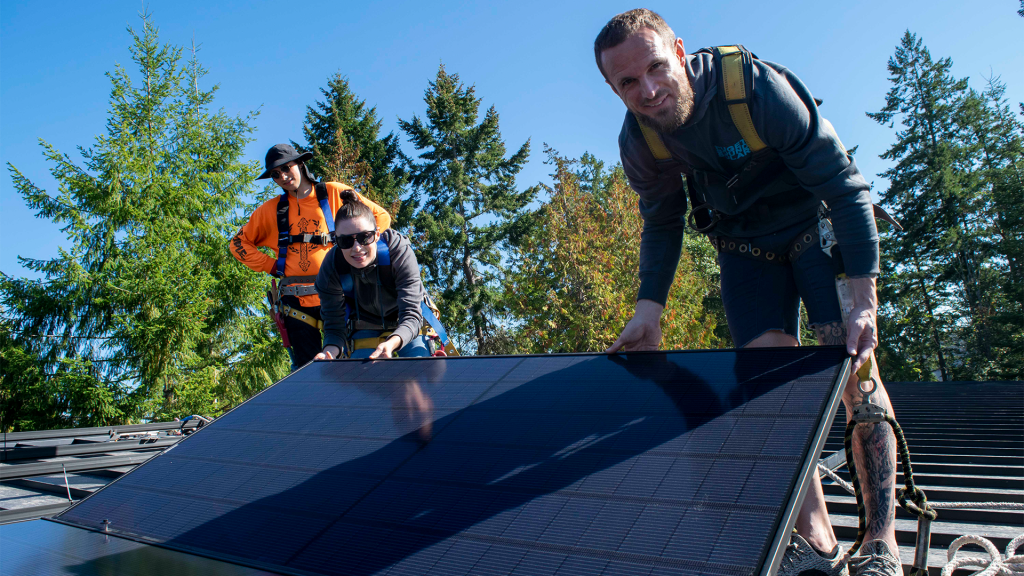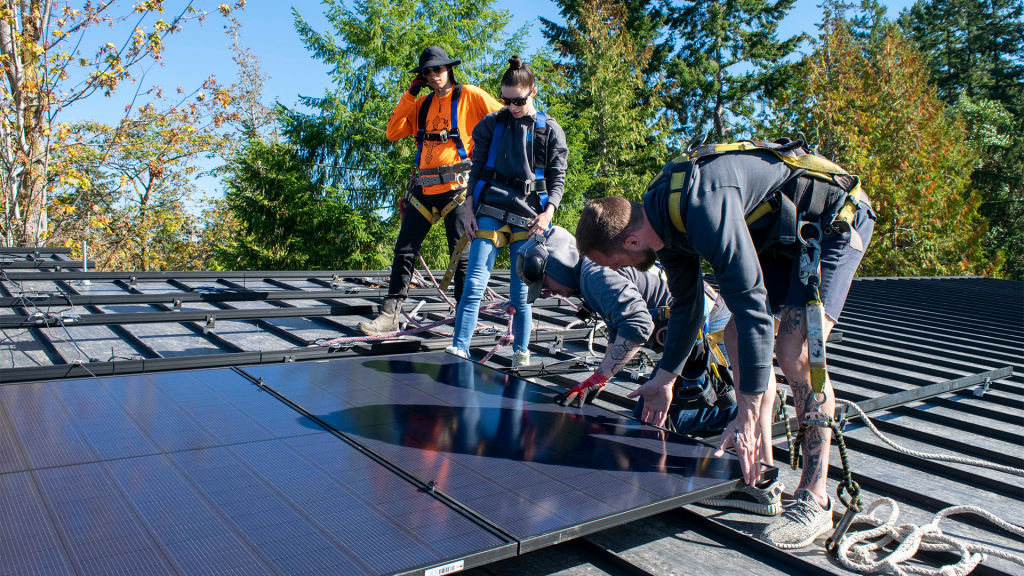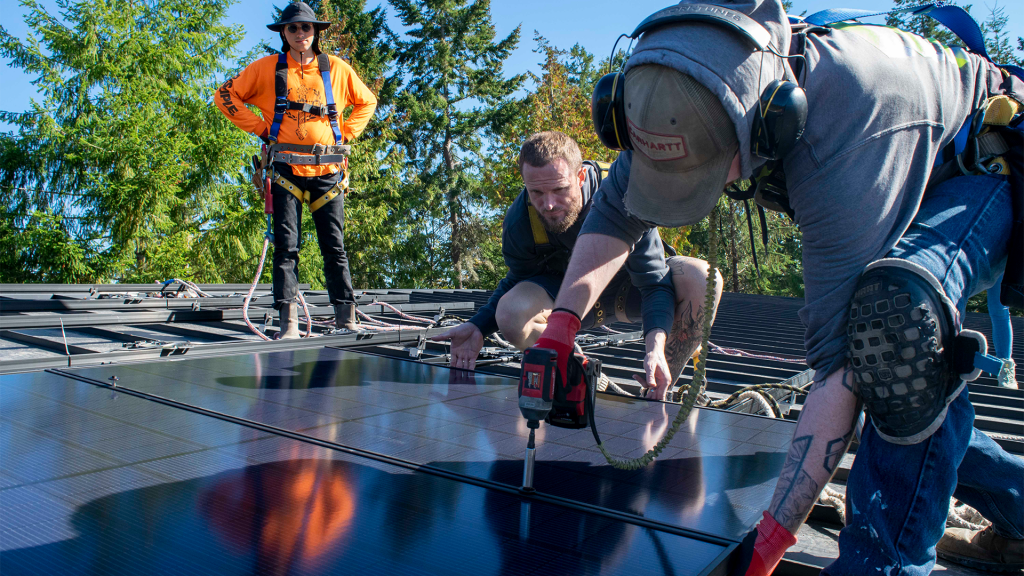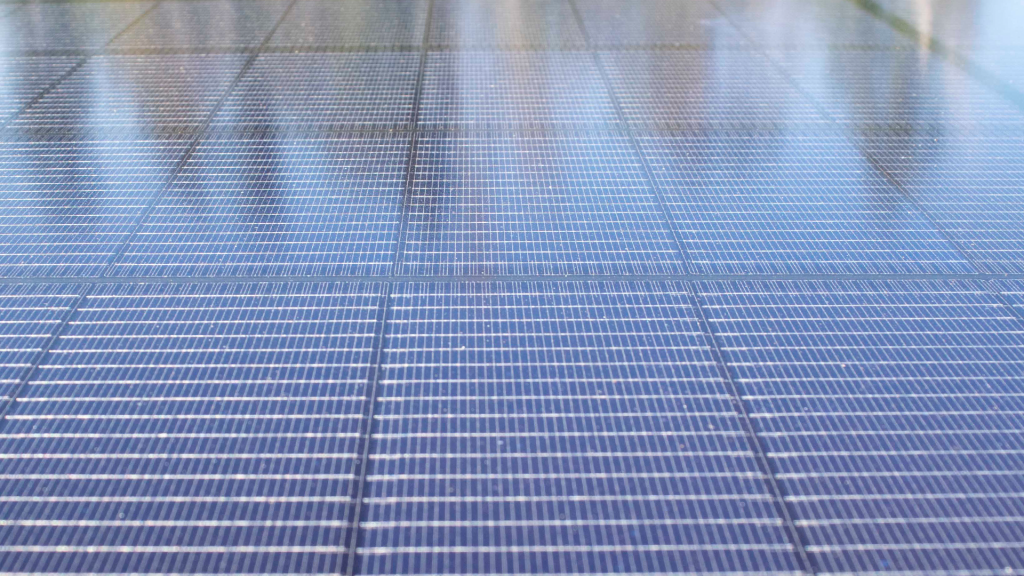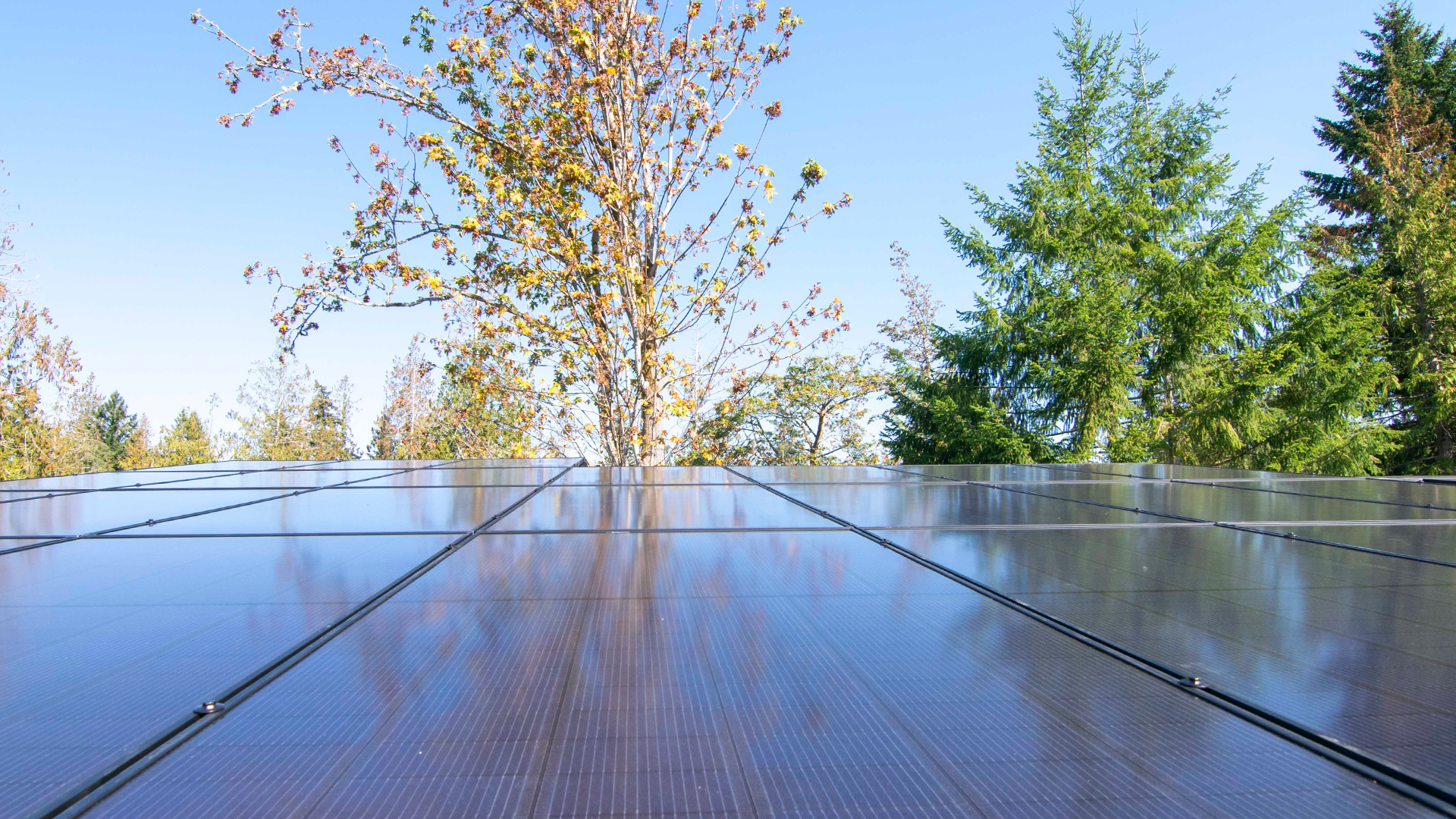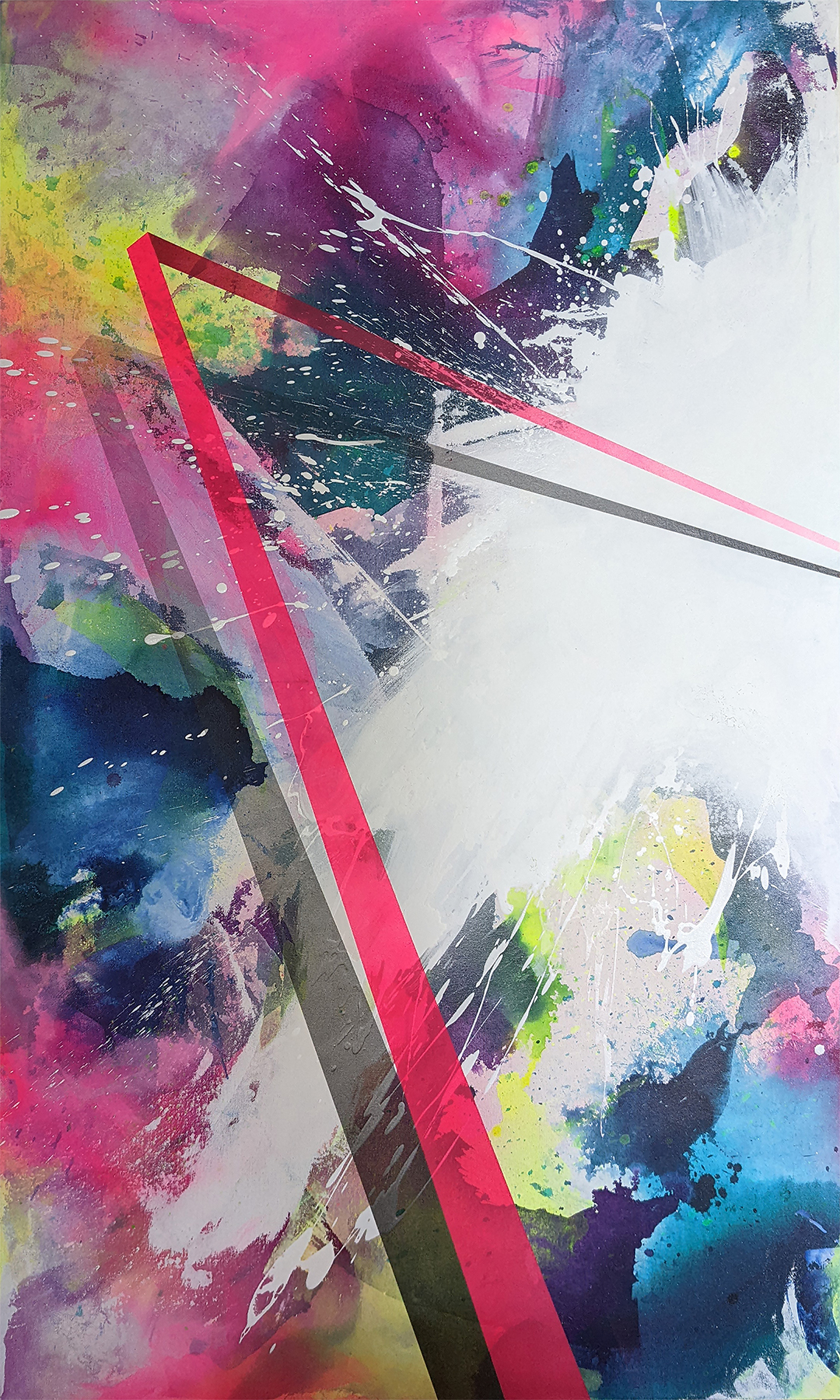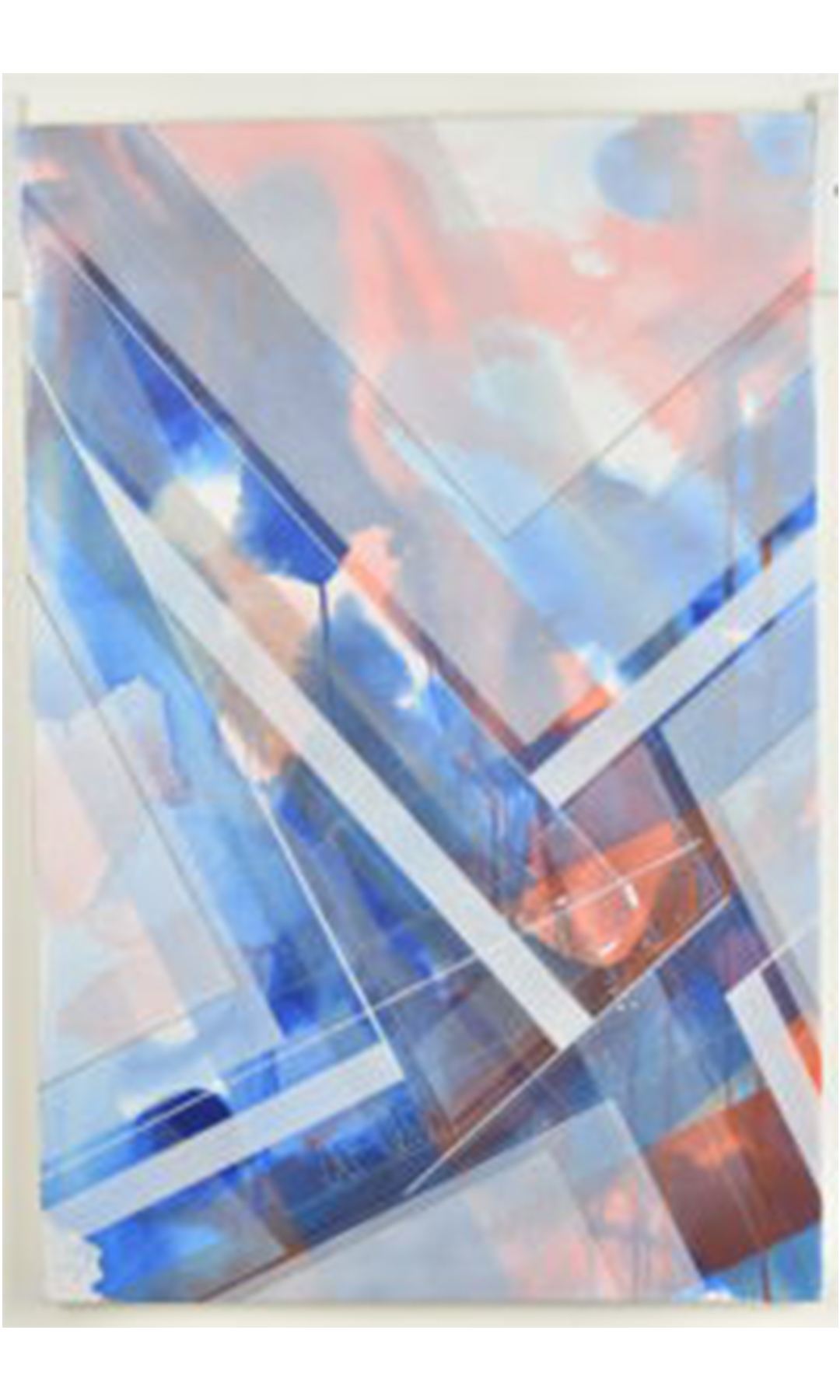Stefan Frei Solar Project … aka, Puget Sounders Solar
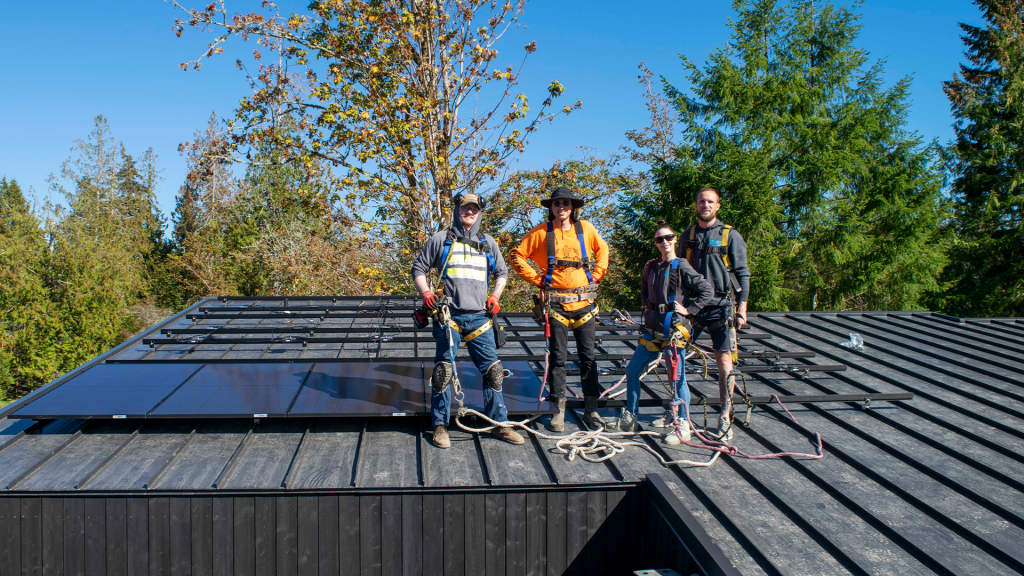
Seattle Sounders fans know and love their goalie, Stefan Frei. He’s a great soccer player who does even better things in the community! It’s that sense of community and participating in something bigger than oneself that’s motivating Stefan and his wife Jennifer to add solar to their new home on Bainbridge Island as part of a bigger effort to live a more sustainable life. In designing and building the new home, it was important to the Frei’s to include energy conservation measures like energy efficient windows, radiant heat flooring, LED lighting, extra insulation and low flow water fixtures along with renewable energy (solar), to minimize their impact on the environment. They drive all-electric vehicles eliminating about 40% of their household’s potential carbon emissions.
Solar Awareness – Personally Signed Artwork
The Frei’s are sharing their solar story with you so they can use Stefan’s public platform to help promote solar and the transition to clean energy. Everyone who submits a request for a free solar quote, adds “Go Sounders” to their message and purchases a solar PV system from Puget Sound Solar after 12/21/22, will receive a personalized, autographed print of one of Stefan’s artworks!!!

The Frei’s home was designed and built by Matt McGregor and the Layline Design Build team. Layline’s been building custom homes in the Pacific Northwest for twenty years, one at a time with a balanced eye toward design and eco-friendliness.
The Frei’s knew there were environmental benefits by adding solar to their new home but they also needed to know if it made any sense financially here in the Pacific Northwest and what considerations they’d need to make if they added solar to their home. Their new home is located in Puget Sound Energy’s electrical territory and about 50% of PSE’s energy mix comes from fossil fuels (23% coal, 27% natural gas) so anything solar produces reduces their carbon footprint significantly.
During this process, Stefan and Jennifer connected with Puget Sound Solar and met with representatives from several solar companies. One reason they liked Puget Sound Solar was because we came highly recommended by the community and after investigating further, the Frei’s identified with our drive to a greener and more sustainable future – that’s at the core of Puget Sound Solar’s values.
Solar Design Process
We need to note that while this Case Study focuses on the process involved with new construction, those projects are complicated so we have a sample quote available to help give you a general sense of the costs of solar for three different sizes projects.
Something unique with new construction projects is deciding how much solar to install for a home that has no history of electrical usage. With existing homes we typically obtain a copy of an electrical bill showing the customers electrical usage over the course of a year and we then figure out if they have enough roof space to fit enough solar to offset 100% of their annual electrical usage. We avoid oversizing solar PV systems because doing so hurts our customers’ bottom line if they end up “donating” leftover kilowatt hours when the utilities clear the Net Metering banks annually on March 31st and start a new “solar” year on April 1st.
While some of the Frei’s roof is impacted by shading from nearby tree’s, there’s actually a great deal of unused roof space available for expanding the solar PV system if they ever decide to add on to their system. The following design reflects the most productive location for solar on their two main rooftop areas. Our design team used a combination of architectural renderings, satellite imagery and Aurora Solar design software to identify the best location and estimate solar production. (The big green “lollipops” represent existing (or planned) trees so we can calculate the impact shadows might have on system performance.)
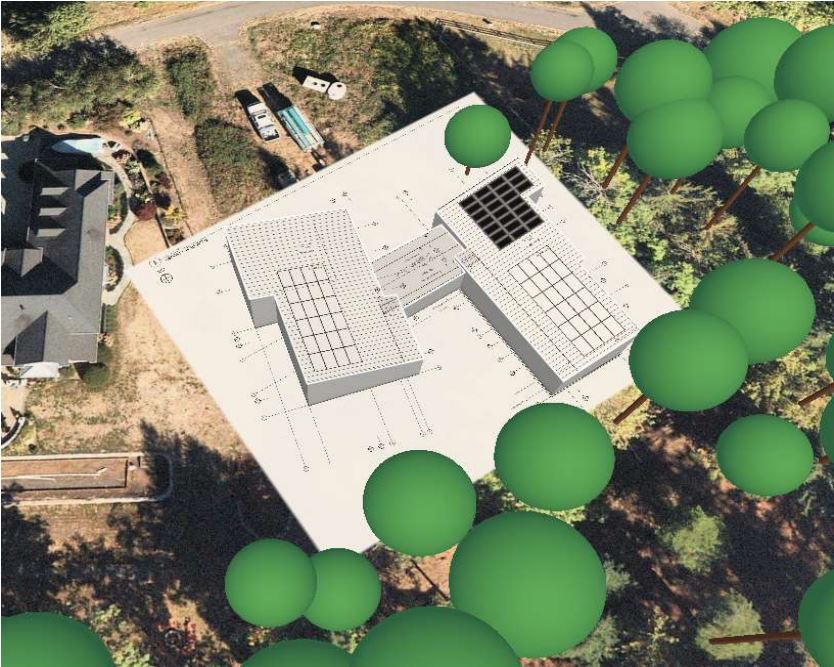
In the following image, the rooftop space is highlighted in shades of purple to red via Aurora Solar’s software). In this case, the “redder” the color, the better the solar production and purple shows the less productive areas. The Frei’s home is situated among well-established trees which cast shadows on the roofline from late fall through early spring. In the chart, you can see how the monthly production varies over the course of the year depending on the position of the sun in the sky and any potential shading by nearby trees. December (65%) is the worst month for solar production and July (93%) should be the best month for the Frei’s system. Solar’s performance here in the Pacific Northwest resembles a “bell curve” over the course of a year with some of the best solar production in the country during the summertime when we have our long summer days that last 15 hours and 59 minutes (in June) versus the dark days in December when we get as little as 8 hours and 25 minutes of sunlight and the sun is only at 18 degrees on the horizon. A little known fact is that a solar PV system in Seattle will produce about 80% of the same sized system located in Los Angeles. Our summers are cooler and solar (and all power electronics) perform best when cool, not hot. Heat degrades the performance of a solar PV system.
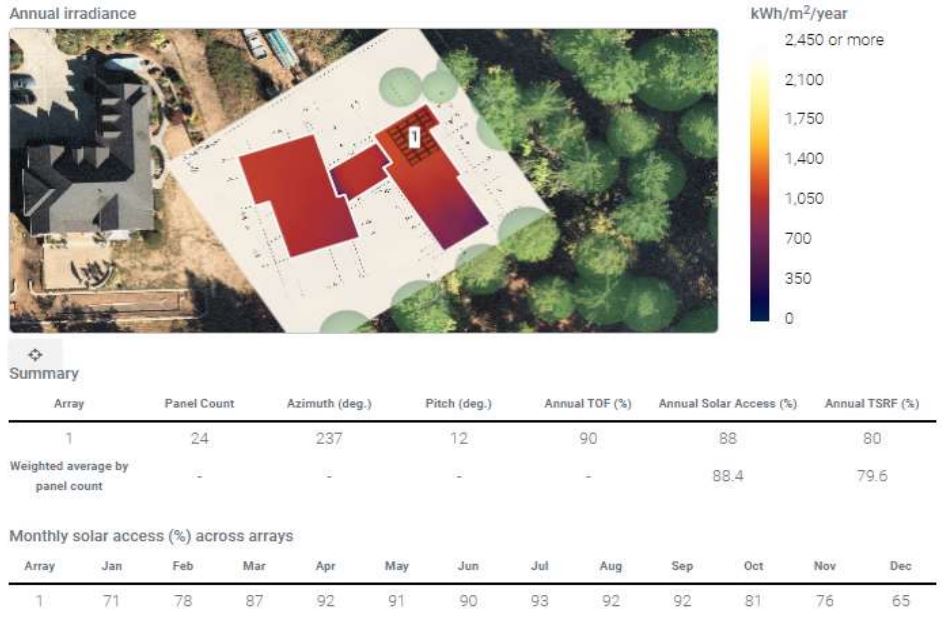
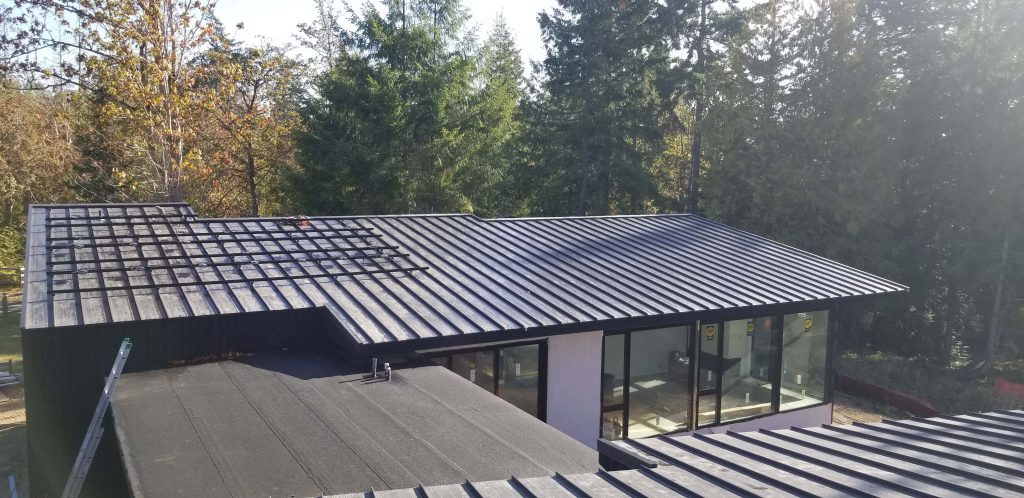
Solar Equipment Decisions
The Frei’s were given a preliminary solar quote with several equipment options including Made in Washington solar panels and REC Solar. When the Frei’s met with our Residential Sales & Design Consultant, Roy Foster, the discussion focused on optimizing solar production given the unknown electrical needs of the home. The Frei’s were impressed by REC Solar’s 25+year history in the solar industry, the panels 21.9% efficiency and industry leading 92.5% Power Warranty at 25-years. Battery backup options were included in the initial proposal but the Frei’s decided to hold off on adding energy storage for now while waiting for the technology to develop further.
After weighing all these factors, the Frei’s decided upon installing a 9.2kW rated REC Solar PV system that will produce about 8,430 kilowatt hours per year. It is comprised of 24 REC Solar 405 watt panels, paired with 24 Enphase IQ8+ microinverters and located in the most productive solar location on their roof. You can see the specification sheets for the REC Solar panels and Enphase IQ8+ microinverters below.
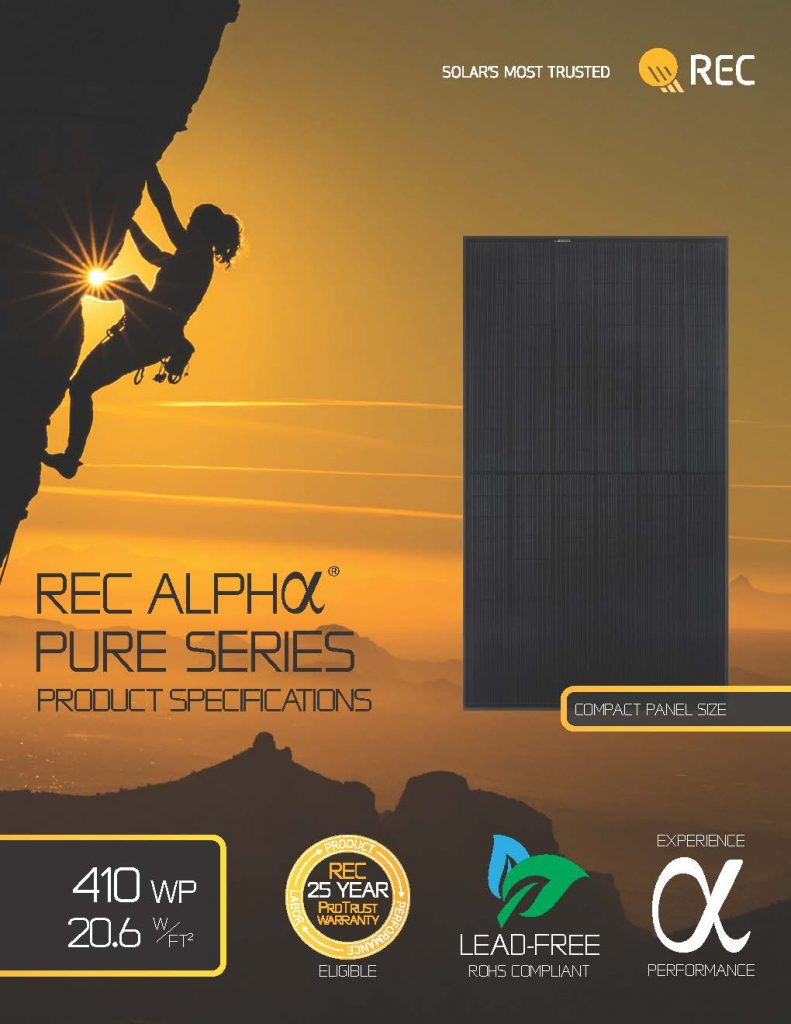
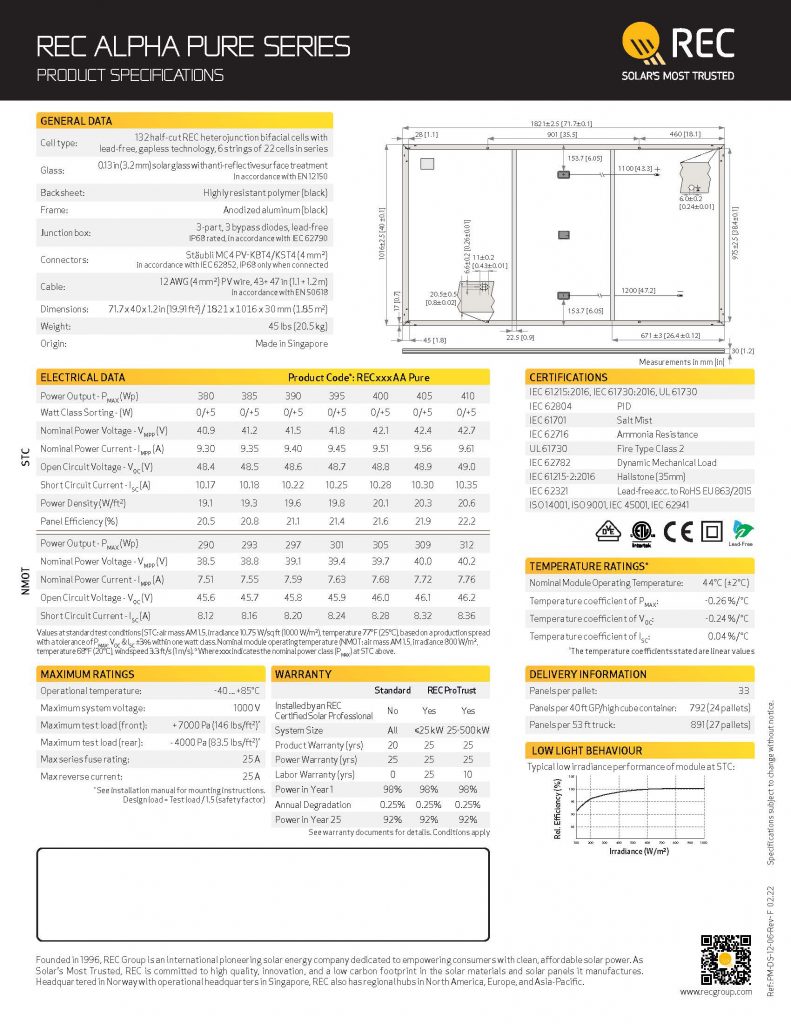
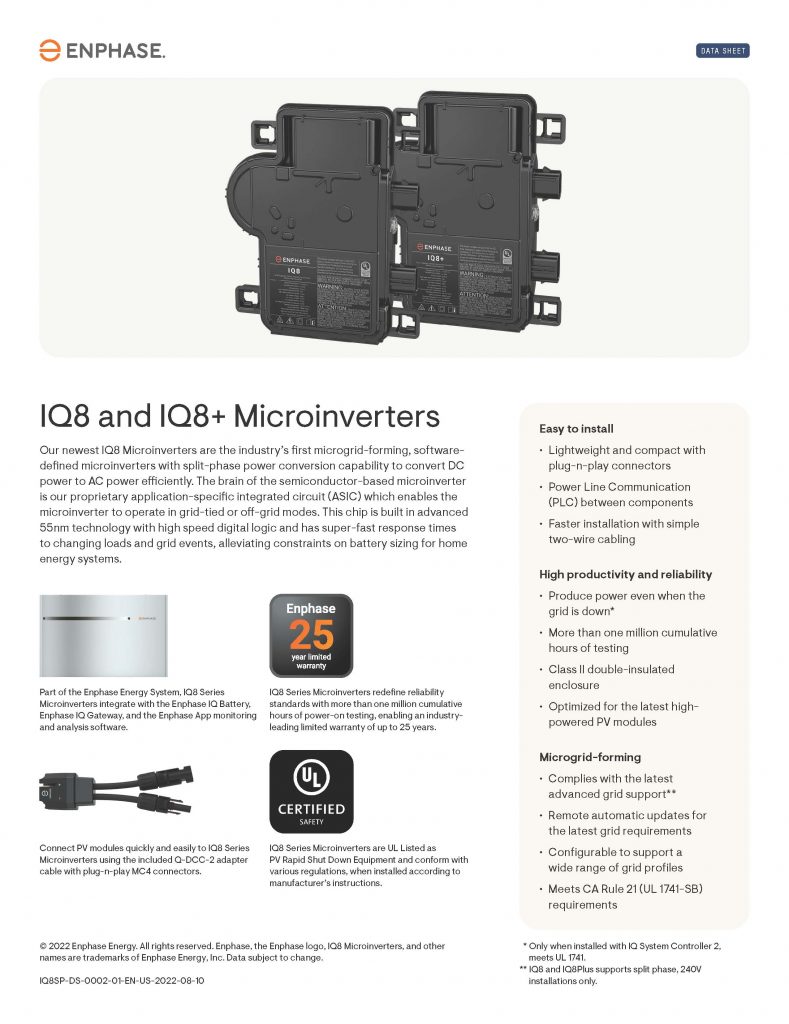
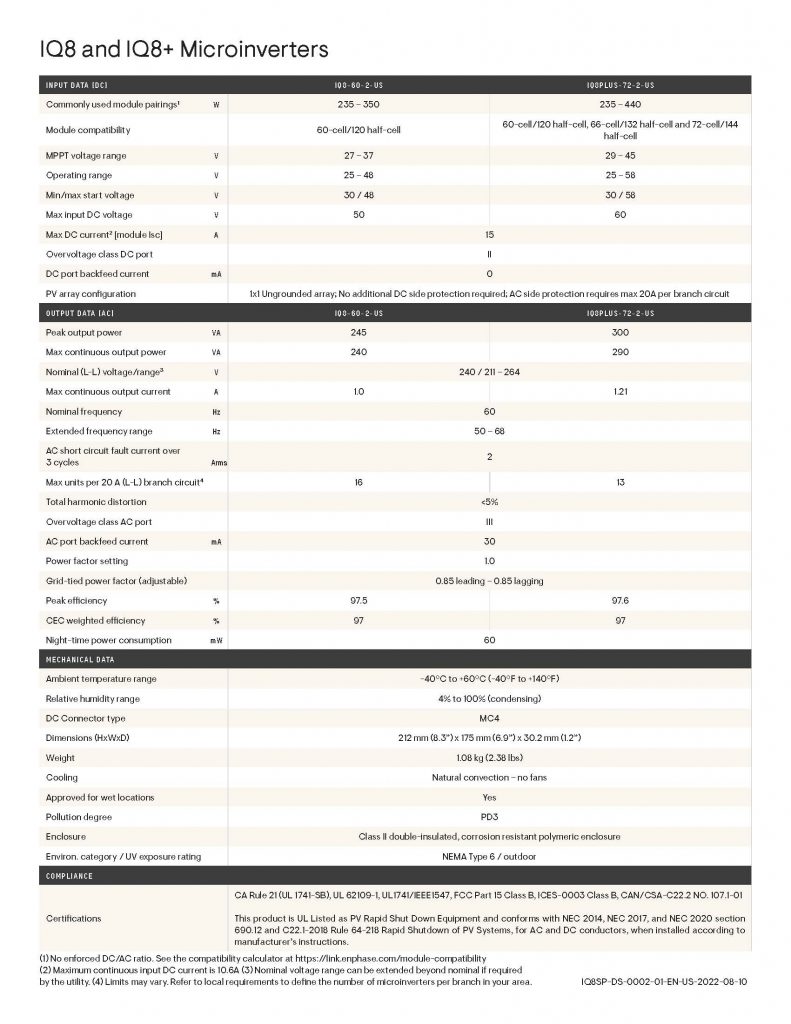
Peace of Mind
Puget Sound Solar installations include an industry leading 25 year Workmanship Warranty, 10 years of system monitoring and our No B.S. (No Bad Solar!) Performance Guarantee. If something is wrong with our work, we fix it. We guarantee the system will meet or exceed its expected performance so you don’t have to worry.
Because the Frei’s are using Enphase IQ8+ microinverters, they’re able to monitor their home energy consumption and solar production (down to each panel) via an app on their phone or computer. They can view live data or scale out to view the production (and consumption) over time (hour, day, week, month, year or lifetime). With the Frei’s permission, Puget Sound Solar will monitor the system for 10 years. If something goes wrong with the system, the Frei’s and our Service and Monitoring Department will both receive alerts, so if the system stops working or underperforms, we’ll know it so we can figure out what’s wrong and fix it.
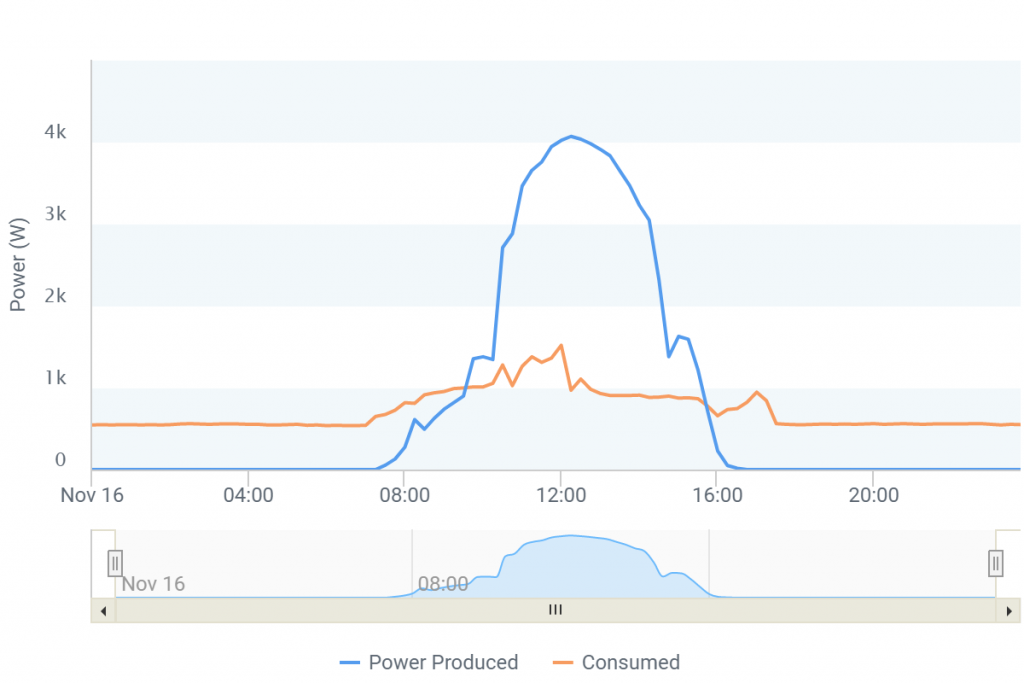
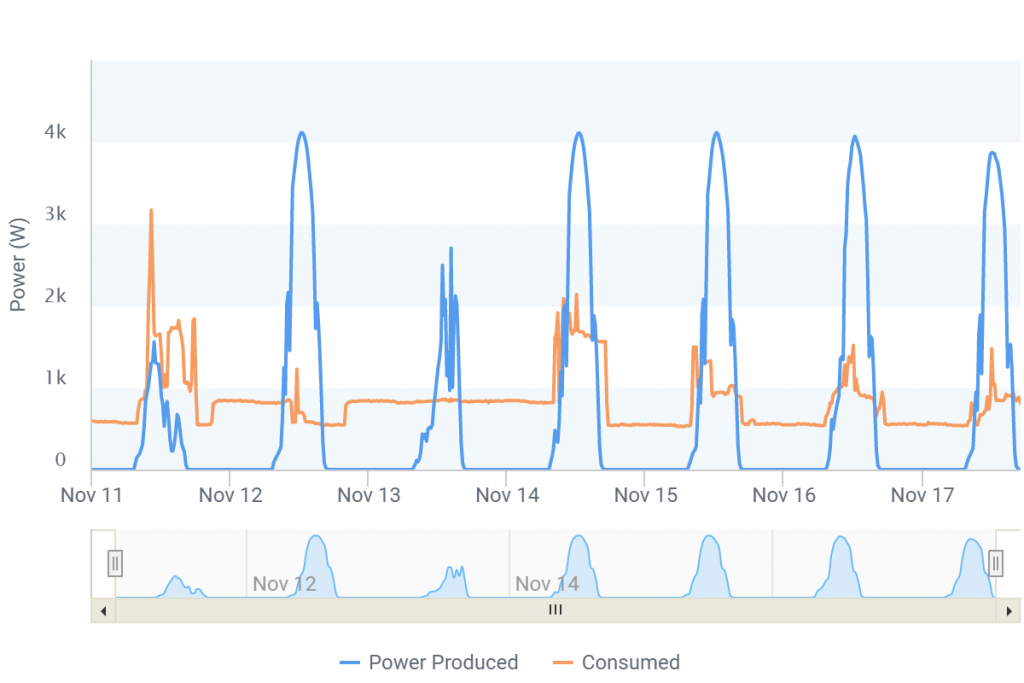
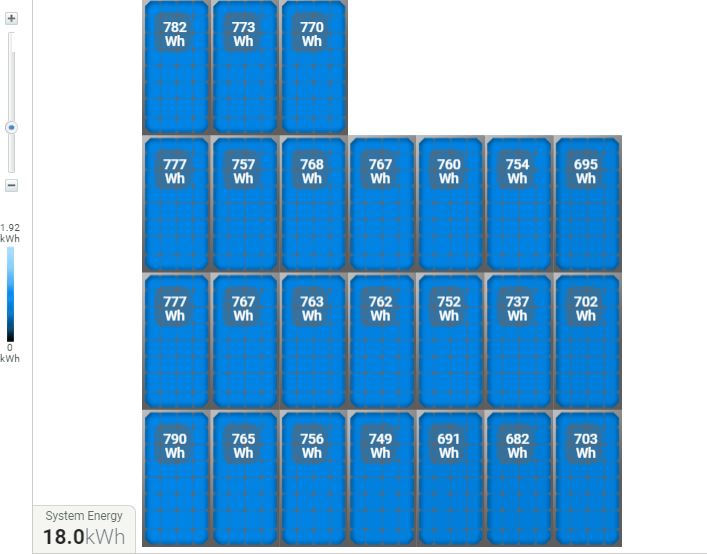
Inside And Ground Level Electrical Equipment
There was a significant distance between the location of the solar array and the home’s main electrical panel which meant some attic gymnastics for Ragnar, our solar installer/apprentice electrician who installed the conduit running across the inside of the home’s attic.
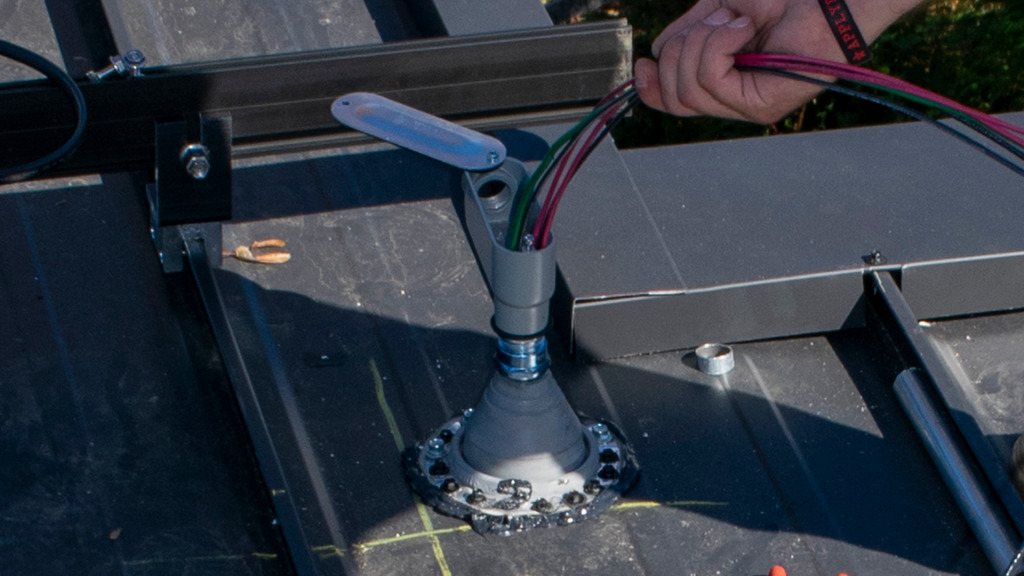
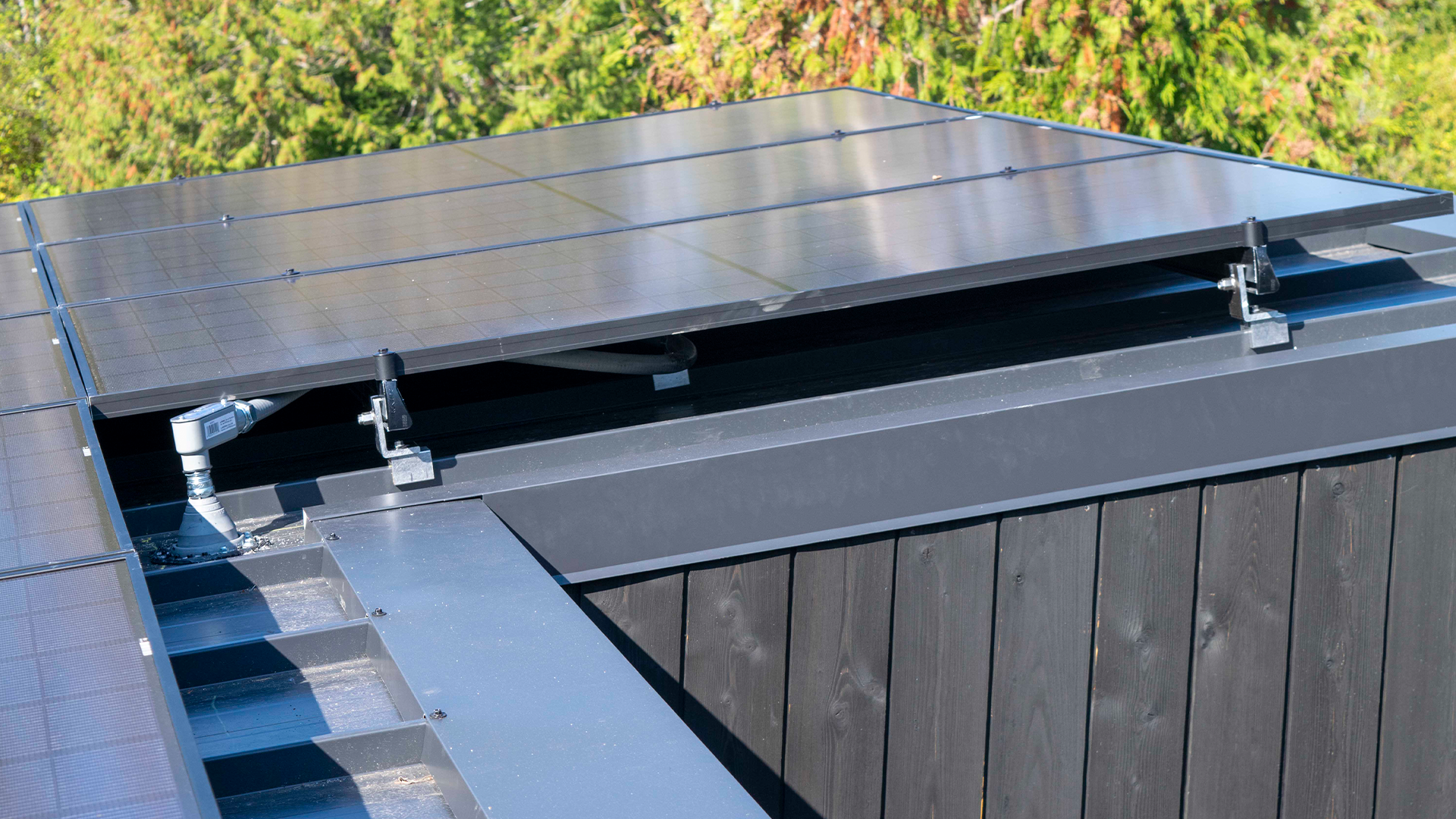
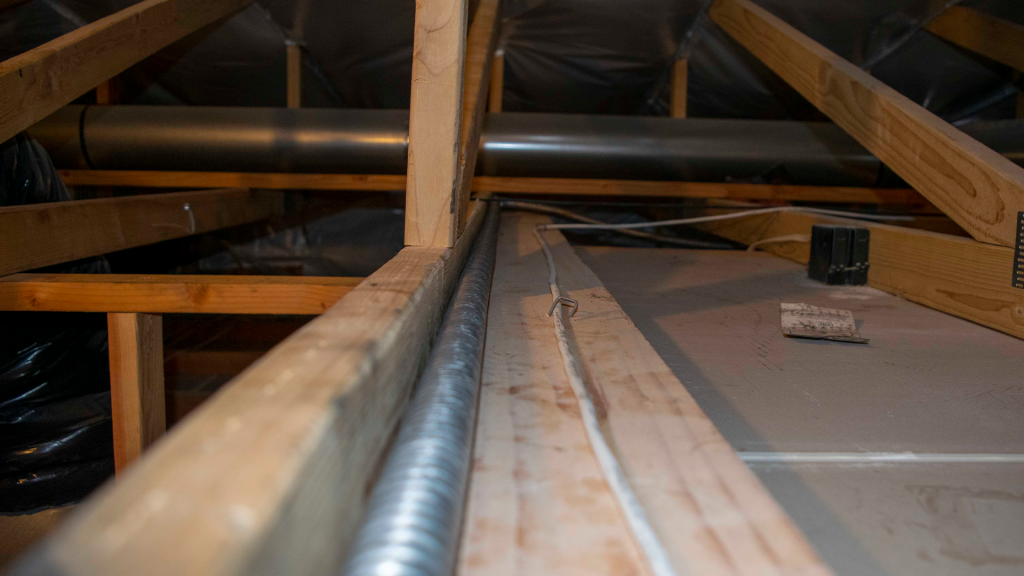
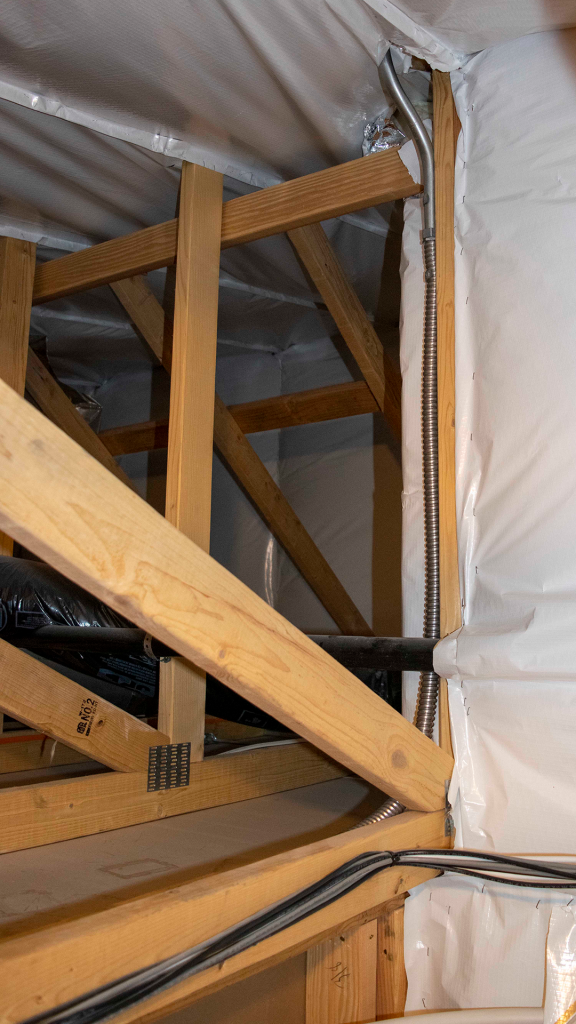
On the inside of the garage, Ragnar removed a section of drywall so Danny, our electrician, could access the solar conduit run installed by Layline. Once that was accomplished, he connected the solar PV system to the home’s electrical panel.
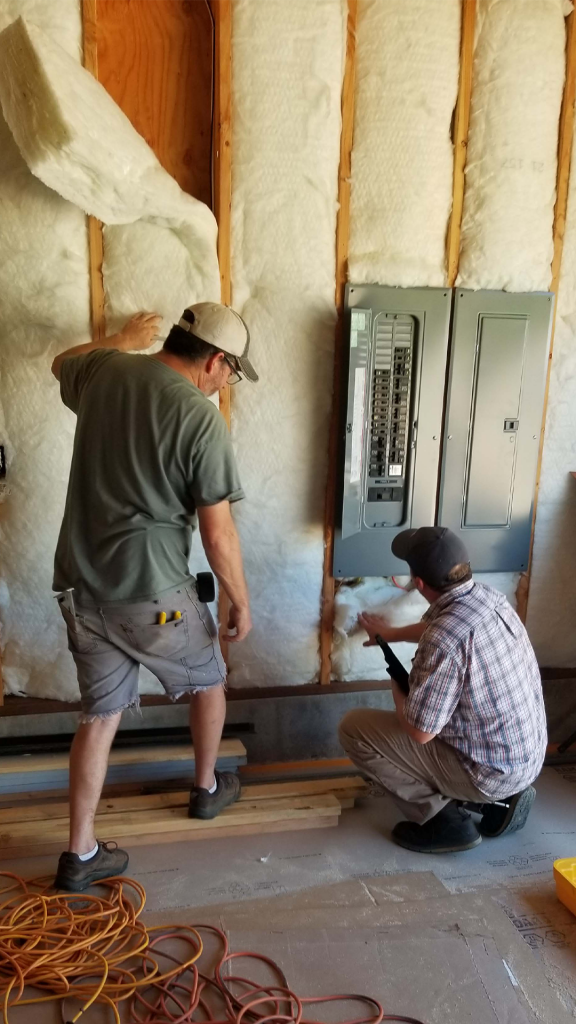
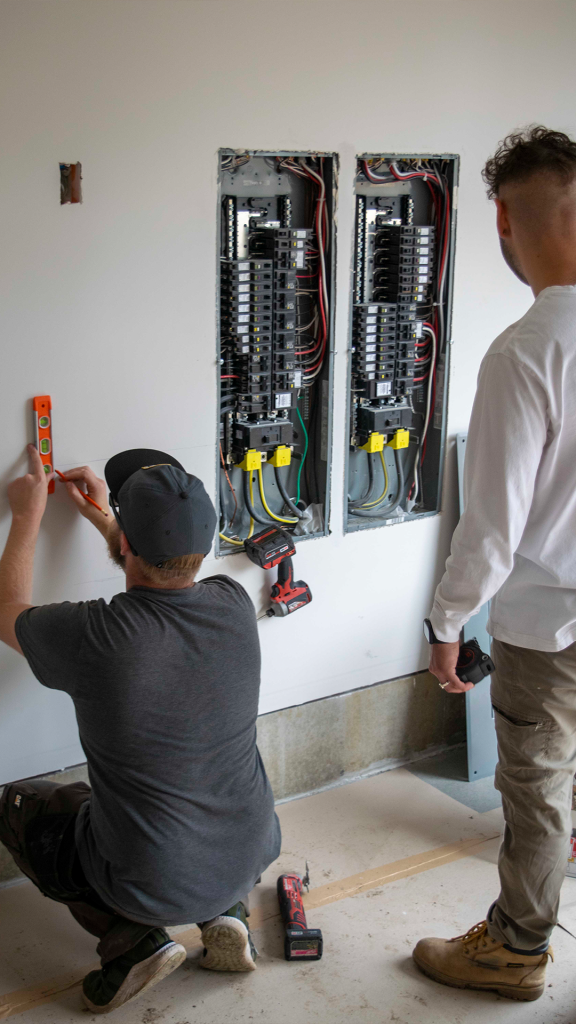
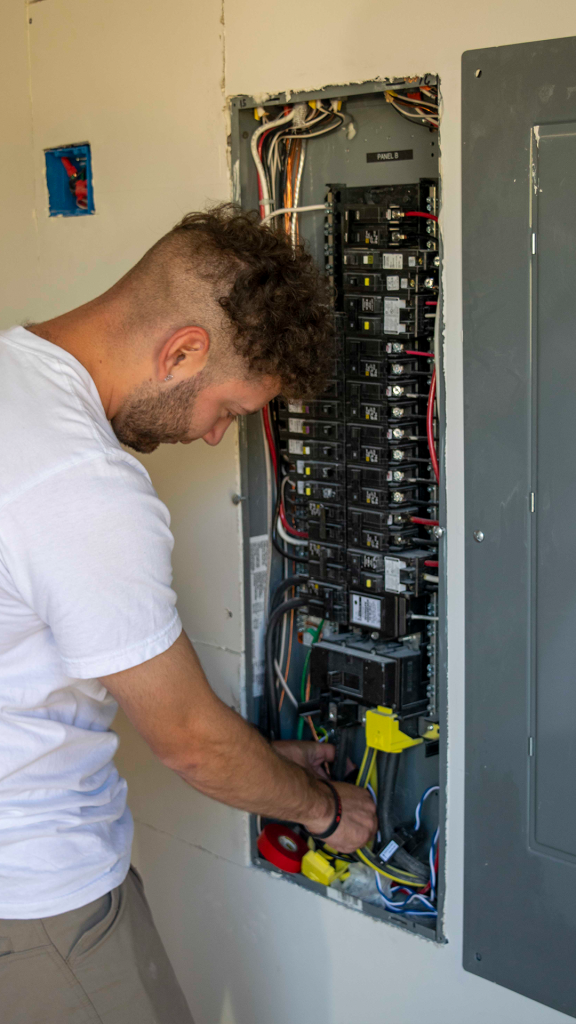
Exterior Electrical Equipment
Danny installed an Enphase Rapid Shutdown controller on the exterior of the house, outside of where the home’s main electrical panel is located. This device de-energizes the solar PV system in case of an emergency.
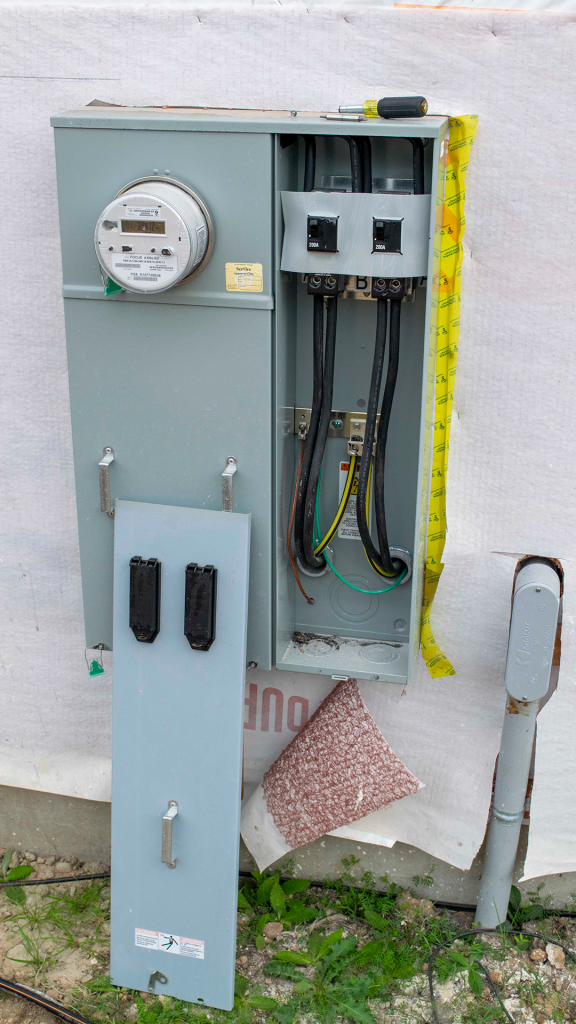
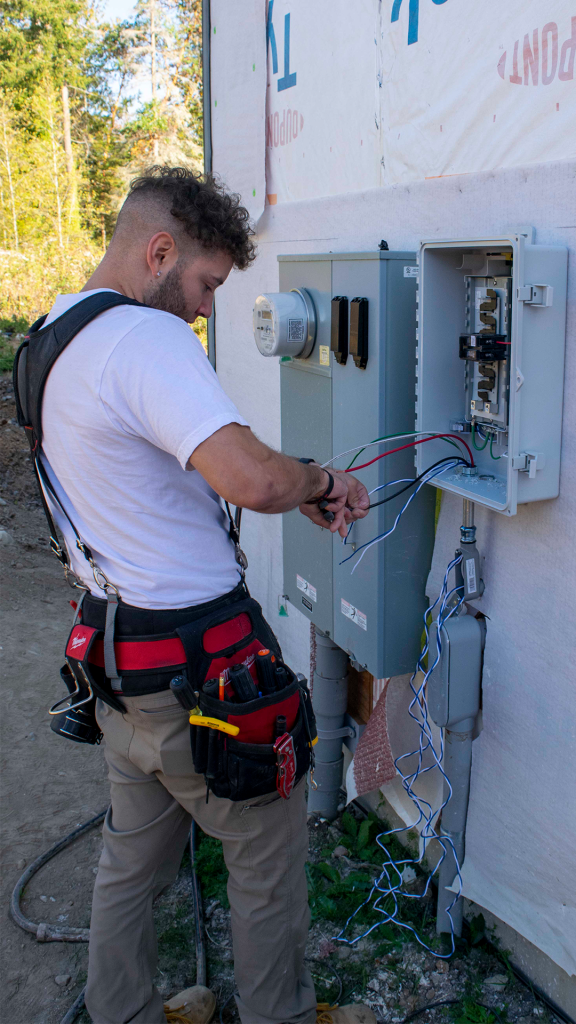
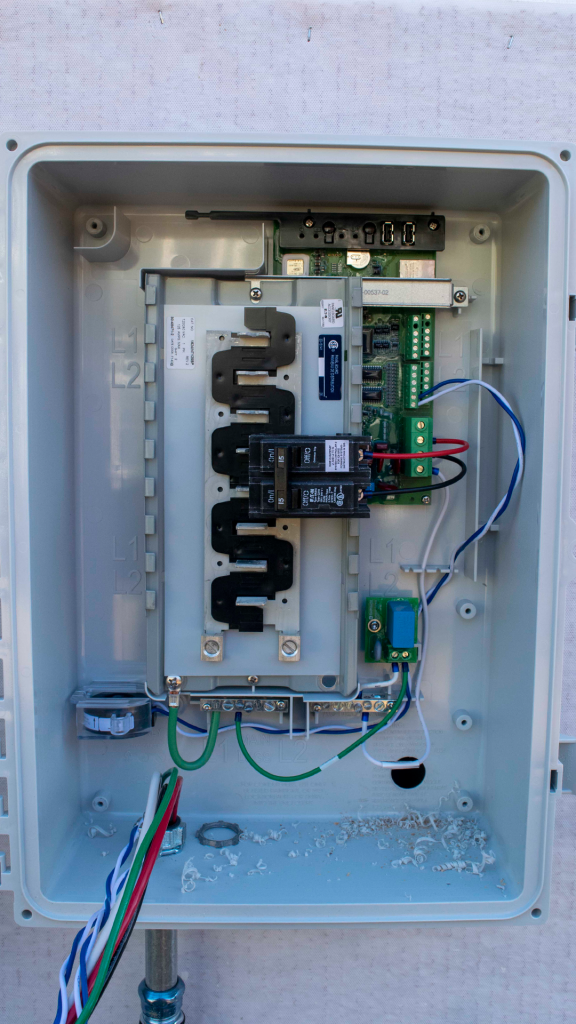
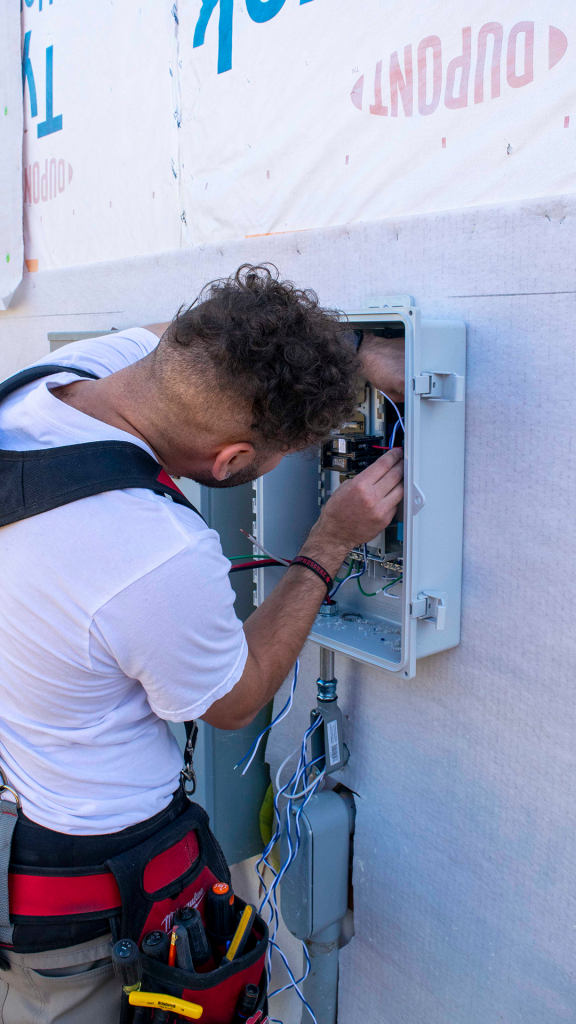

Rooftop Solar Equipment
The Frei’s selected a standing seam metal roof for aesthetics, durability and its solar readiness. Clamping onto the metal ridges minimizes roof penetrations and helps speed up the solar installation. Our team used S-5 clamps to attach to the metal roof’s standing seams, then added “L” brackets and IronRidge rails to mount the microinverters, solar panels and grounding wires.
Day, our solar installer uses a line to align the S-5 brackets. Once the brackets are in place, an L bracket is attached which the IronRidge is mounted onto. Enphase IQ8+ microinverters are added to the rails prior to the modules being placed. You can see the ground wire connecting the different rows together.
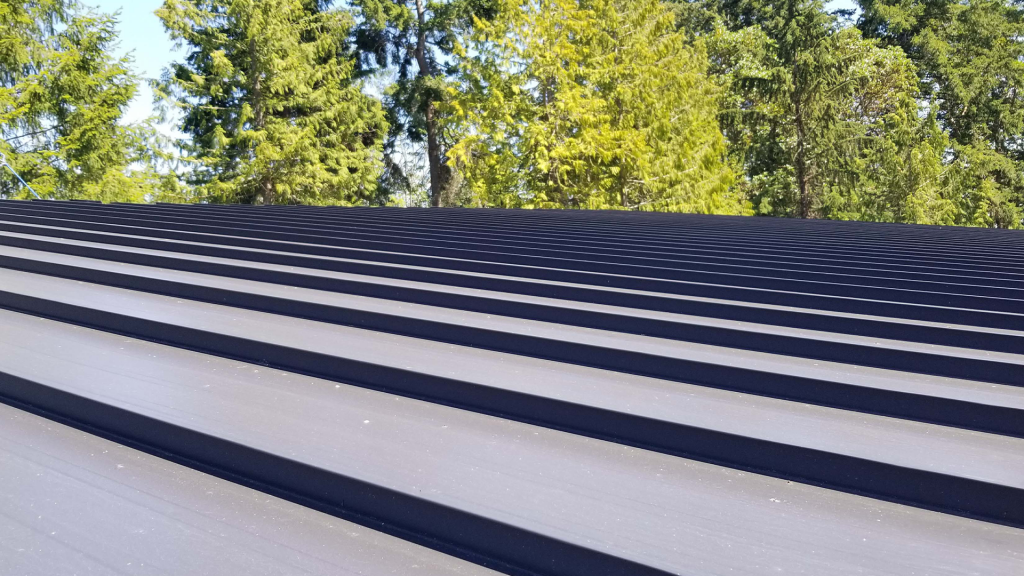
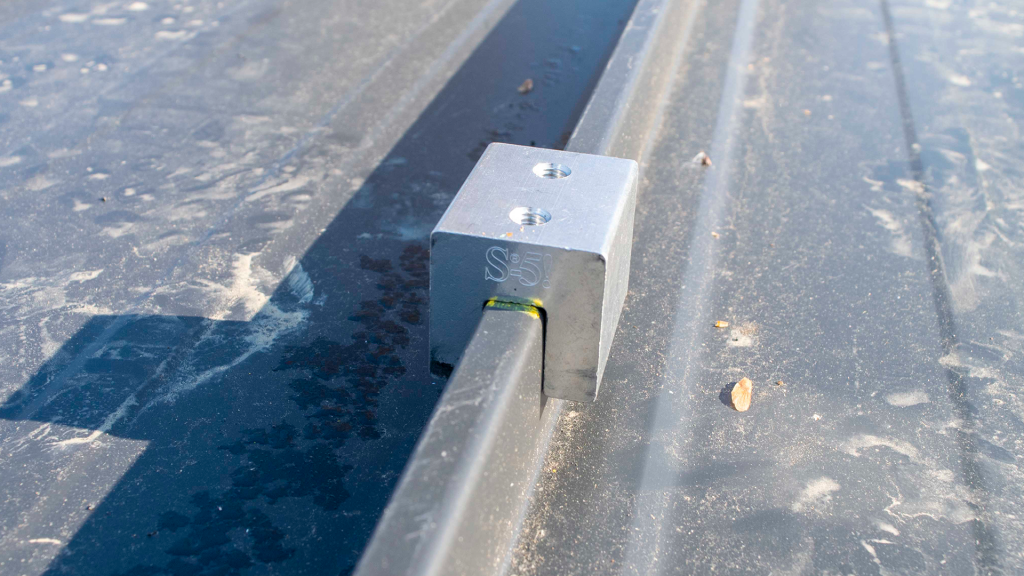
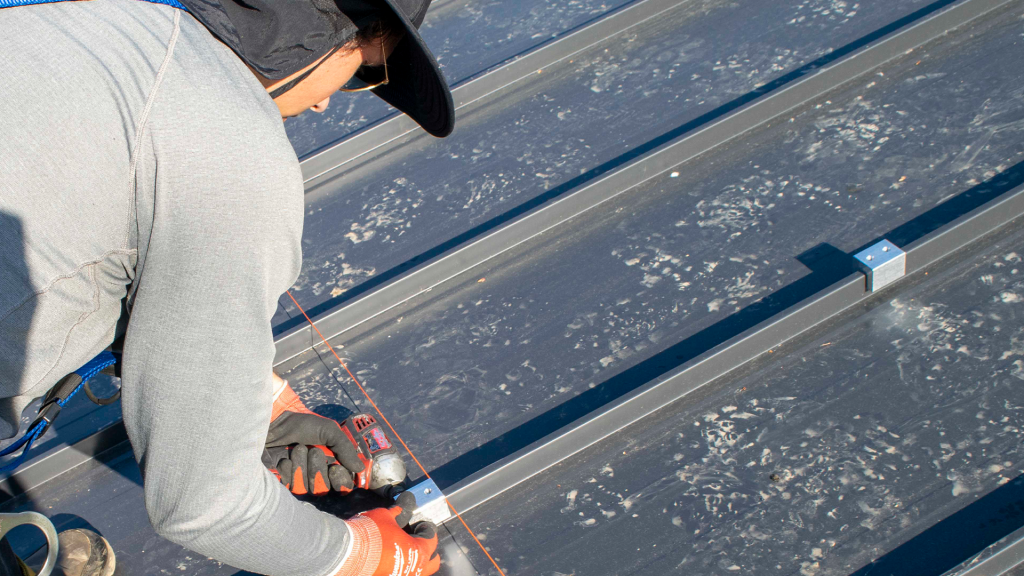
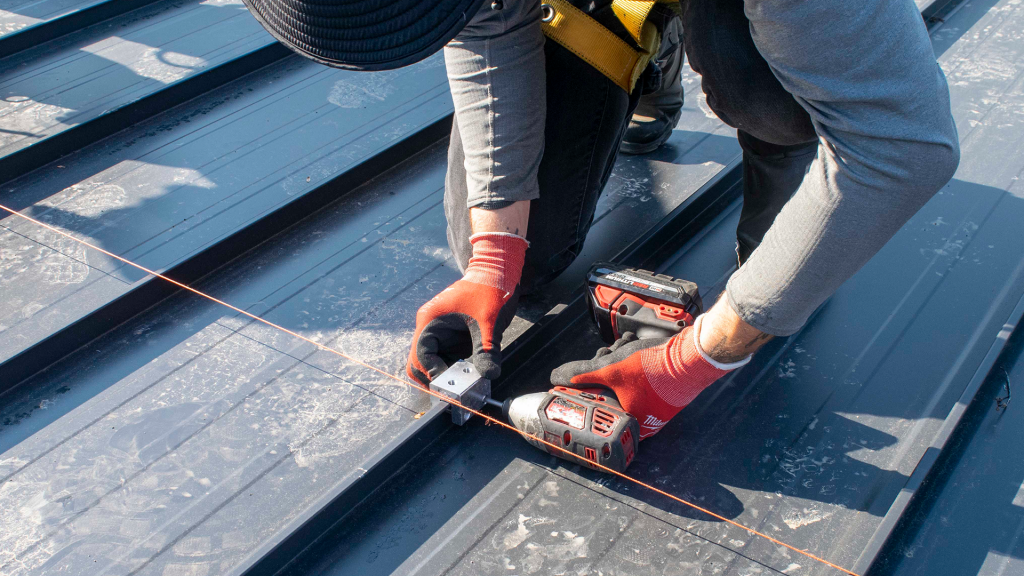
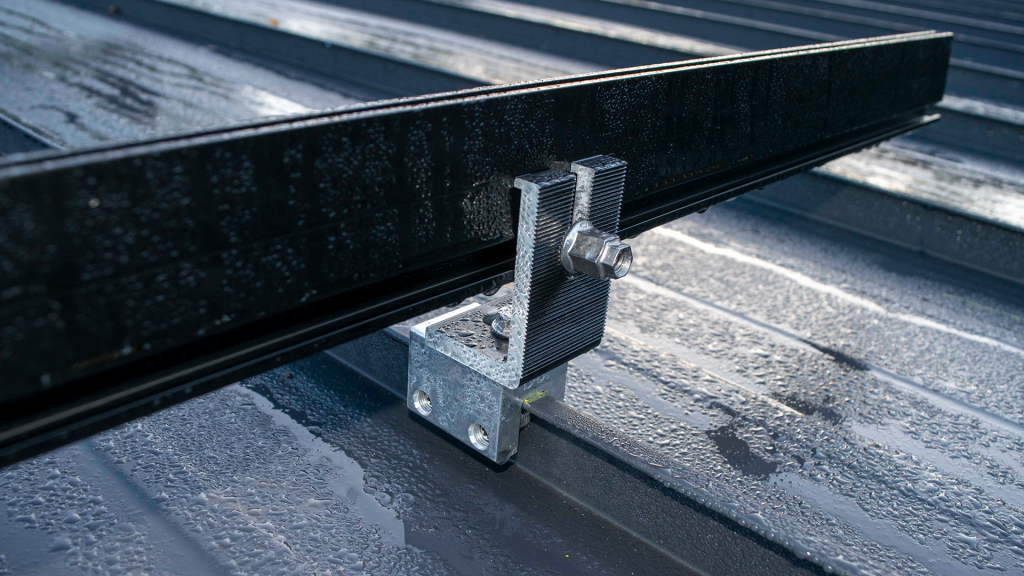
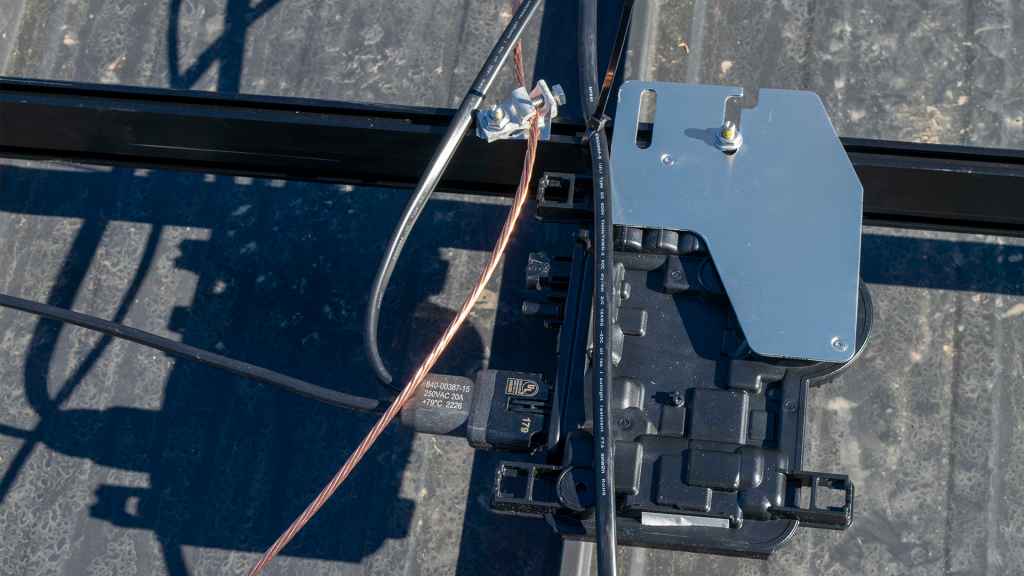
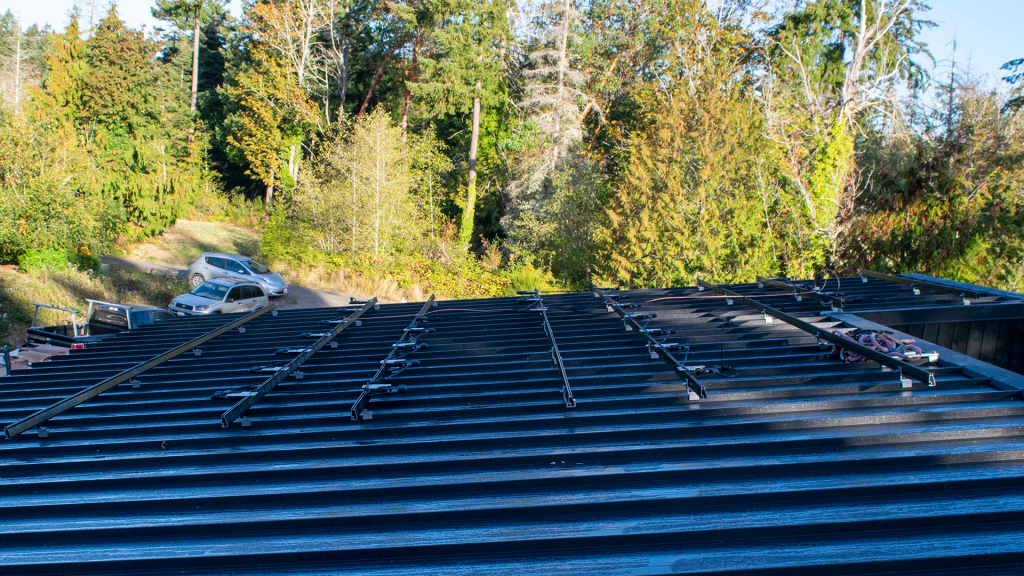
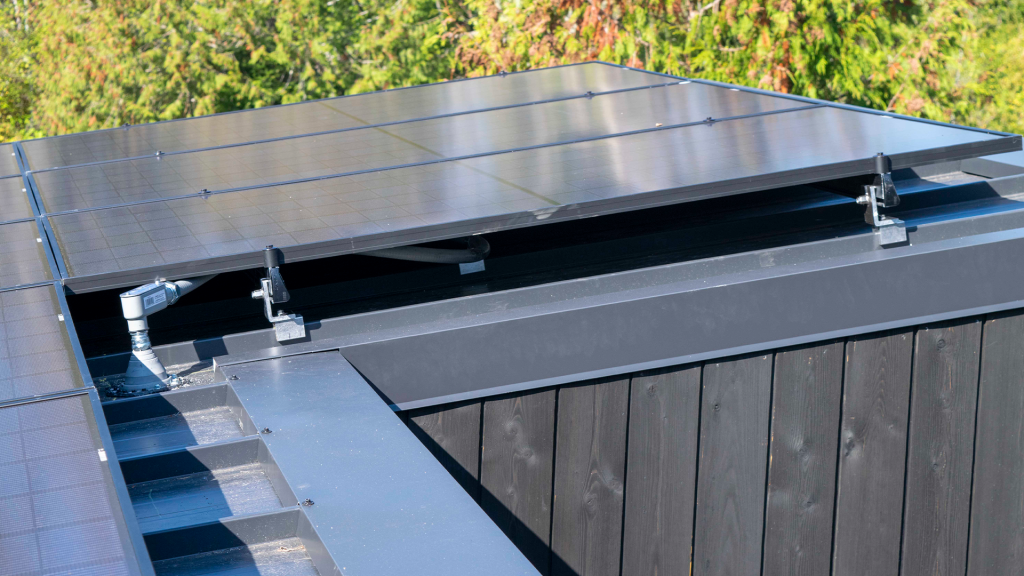
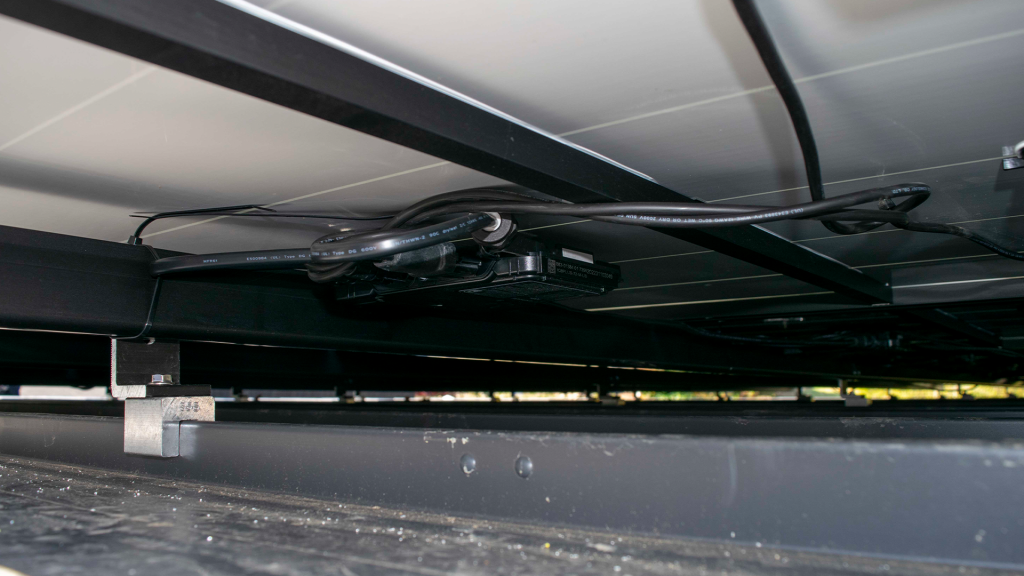
Signs Of Progress
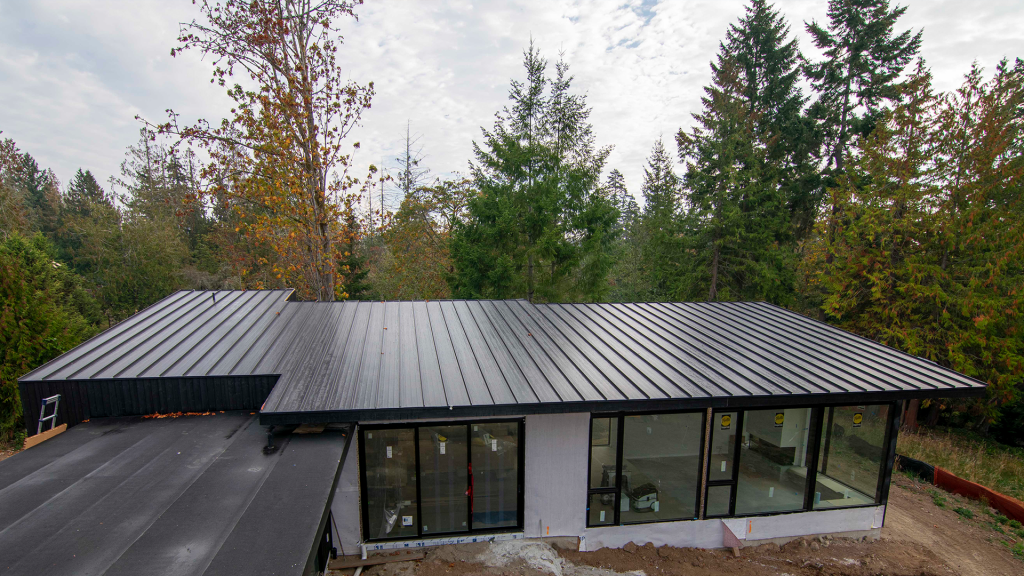
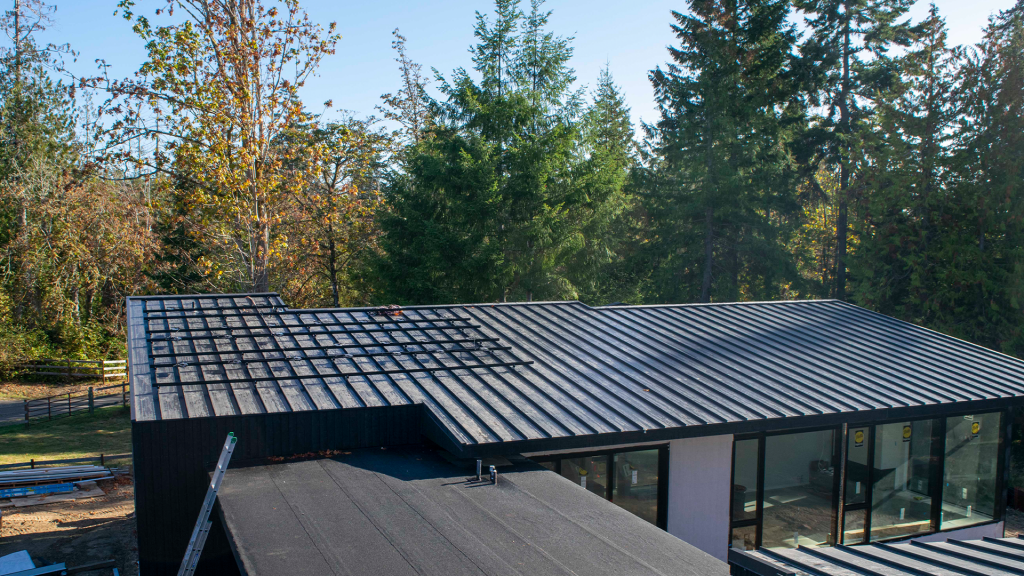
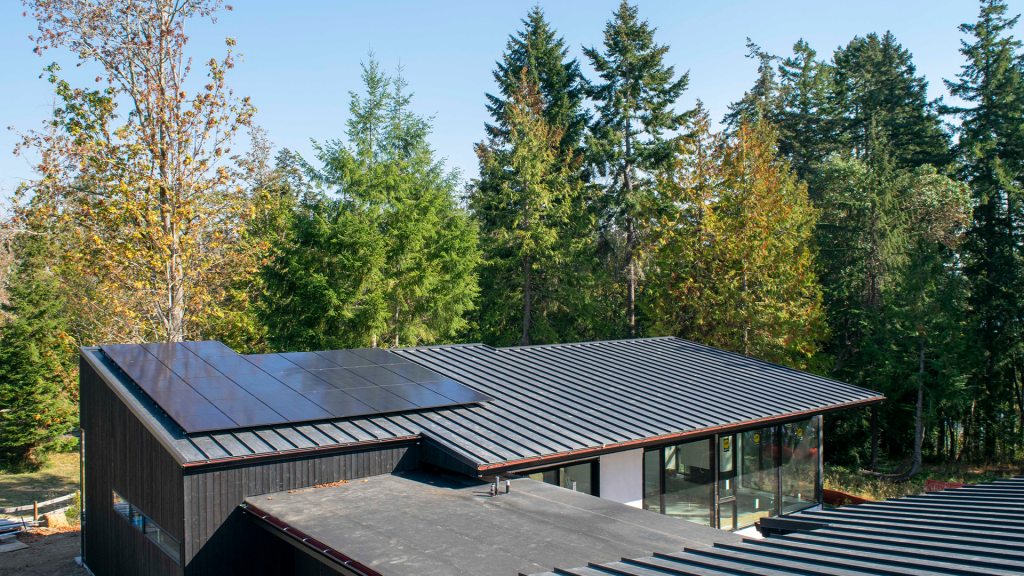
Jennifer and Stefan are thoroughly involved in their house project, from collaborating with Layline about the home’s design and components to coming up on the roof to check out the installation process and they helped install a panel. Scroll through the gallery to see their installation skills!
Solar Freezes Inflation
We’re super excited about the Frei’s solar project because they can help others realize solar is a sound financial and environmental decision here in the Pacific Northwest. They’re locking in the cost of all the electricity the solar PV system produces for the next 25 years which hedges against inflation and periodic utility rate increases.
Similar Thinking

Stefan’s analytical thinking is evident in his approach to soccer and his artwork which can be seen (and purchased) on his personal website – www.stefan24frei.com. During the installation he noted how an efficient goalkeeper actually uses a lot of geometry by minimizing distances and precisely cutting attackers angles to the goal. That thinking process also serves to give Stefan’s visions on canvas.
Stefan noted he really found the patterns within the solar PV system interesting, the racking and attachments to the standing seam metal roof, the whole solar array and the subtle patterns on the solar modules, including the cells and ribbon wire. You can see some of Stefan’s artwork below but please go check out his other work on his personal art website.
Go Puget Sound(ers) Solar!
If you’re interested in getting a free, no pressure, customized solar quote so you can decide if solar is right for you, please fill out our contact form below and let us know Stefan and Jennifer sent you with a “Go Sounders” in the message field.

